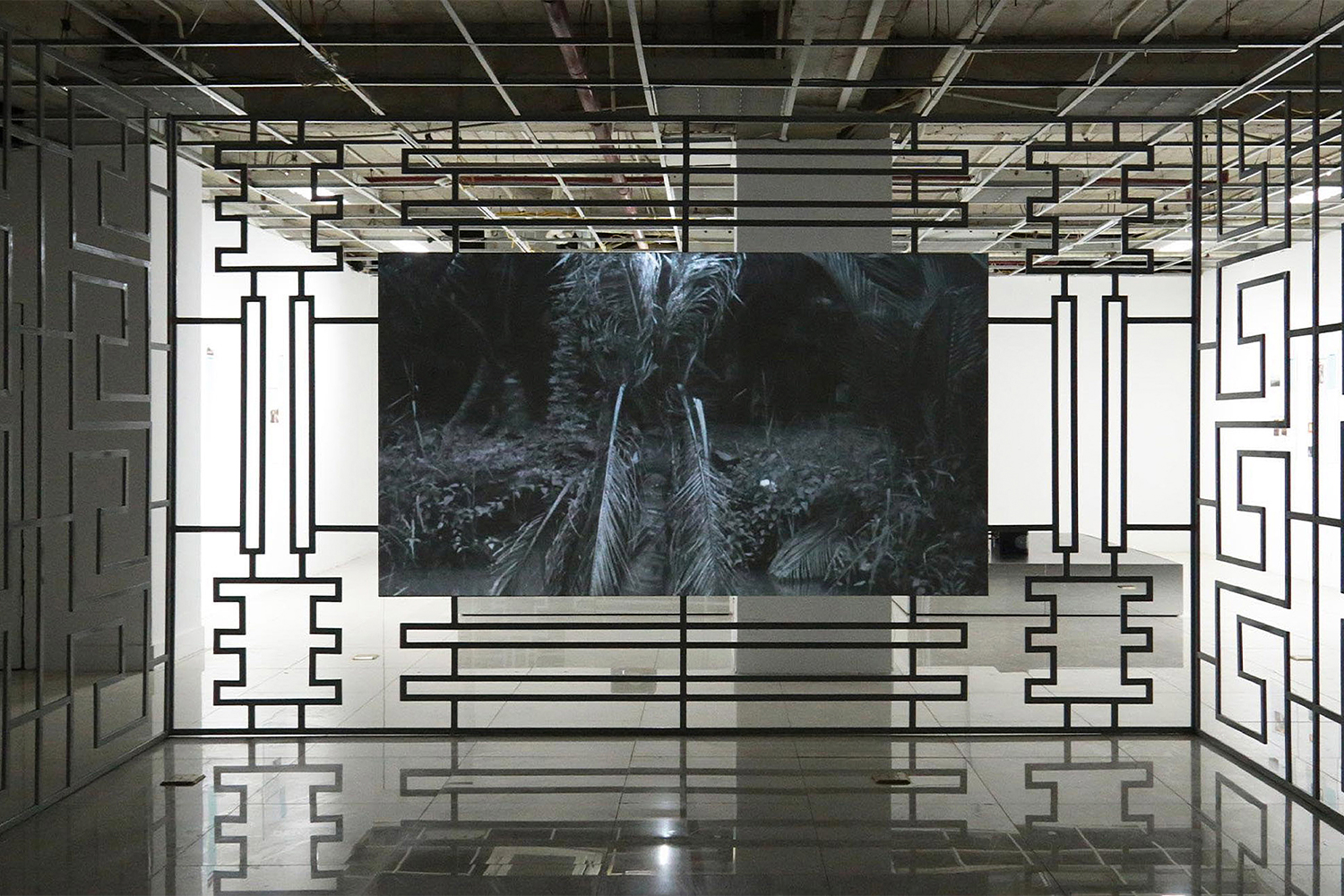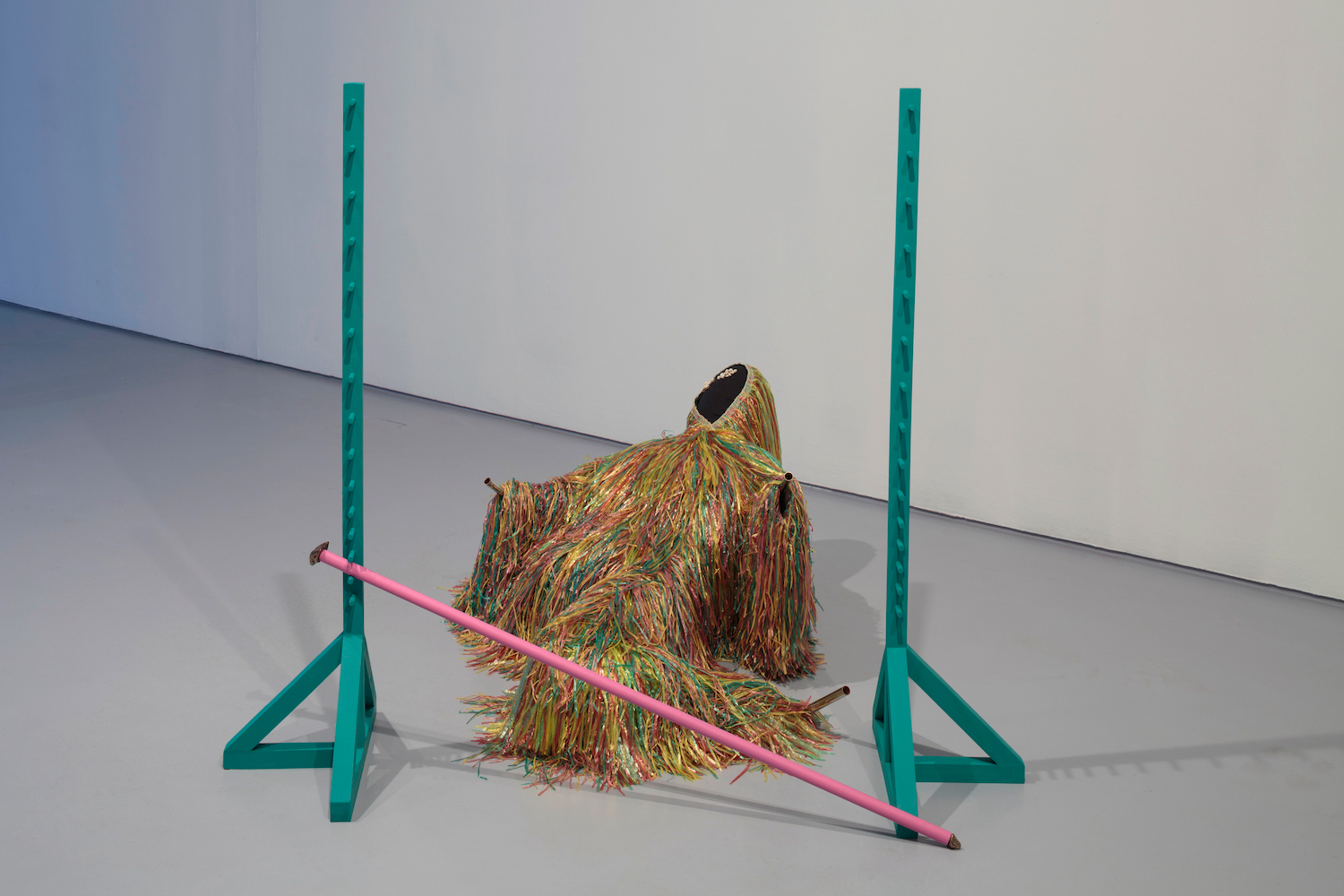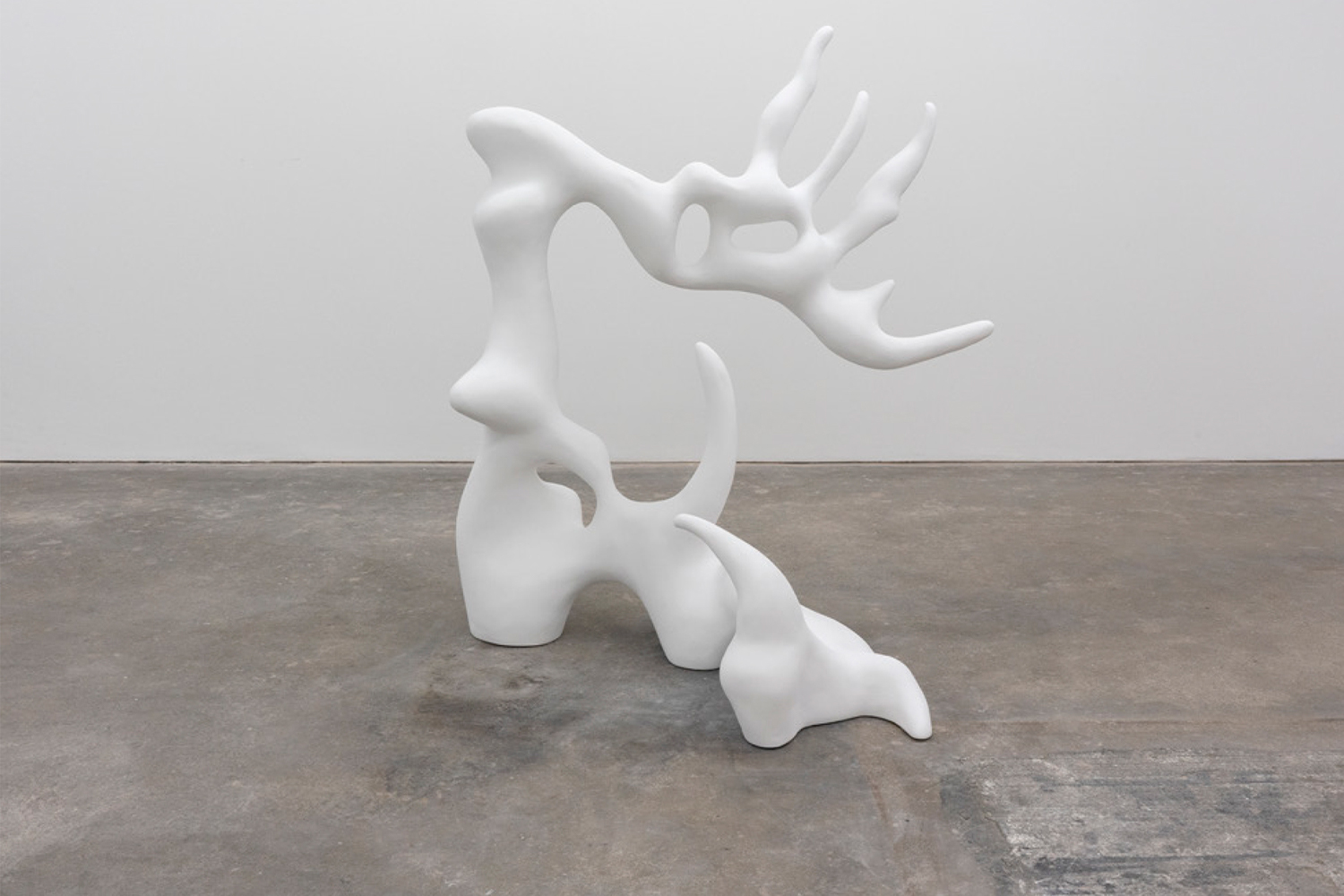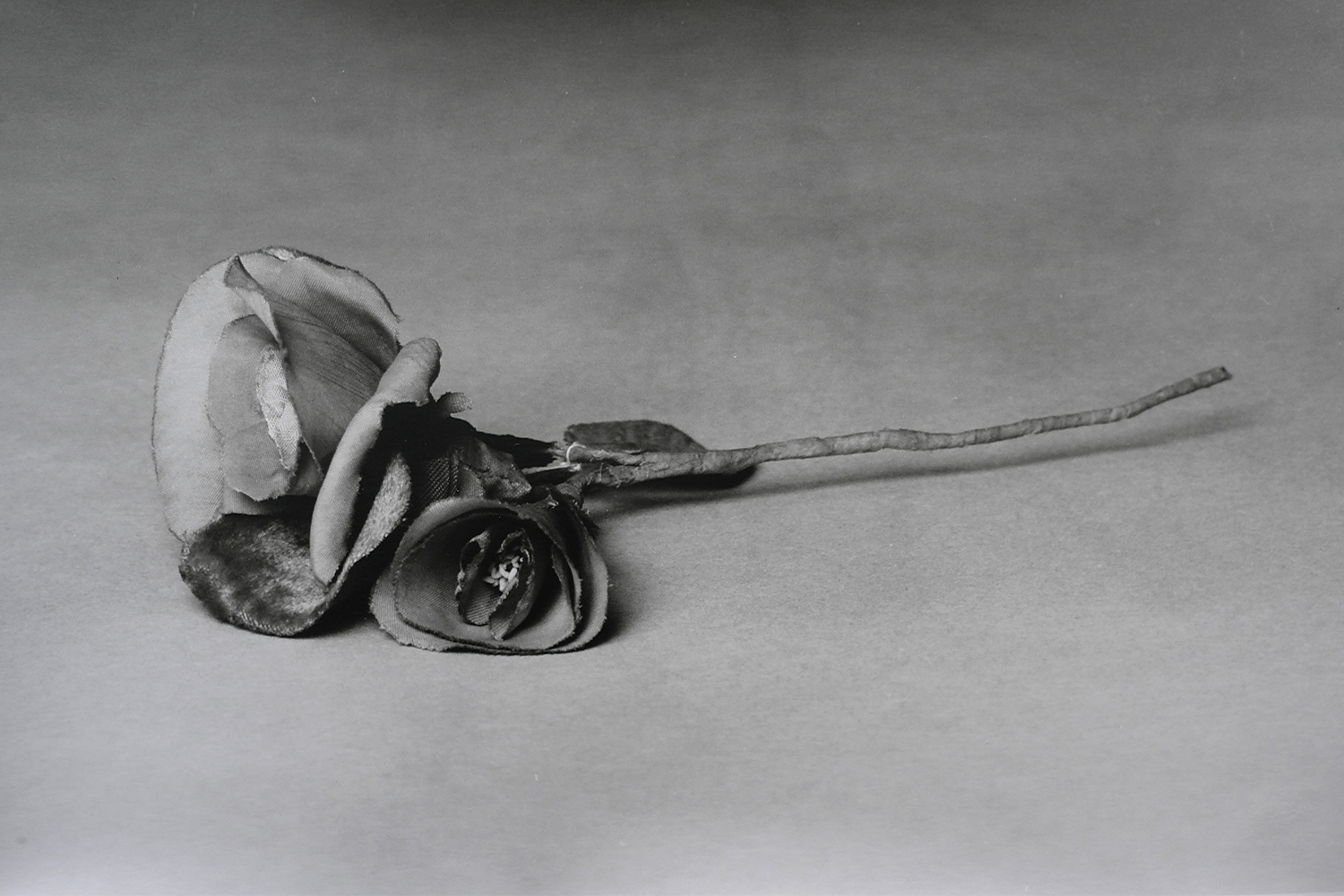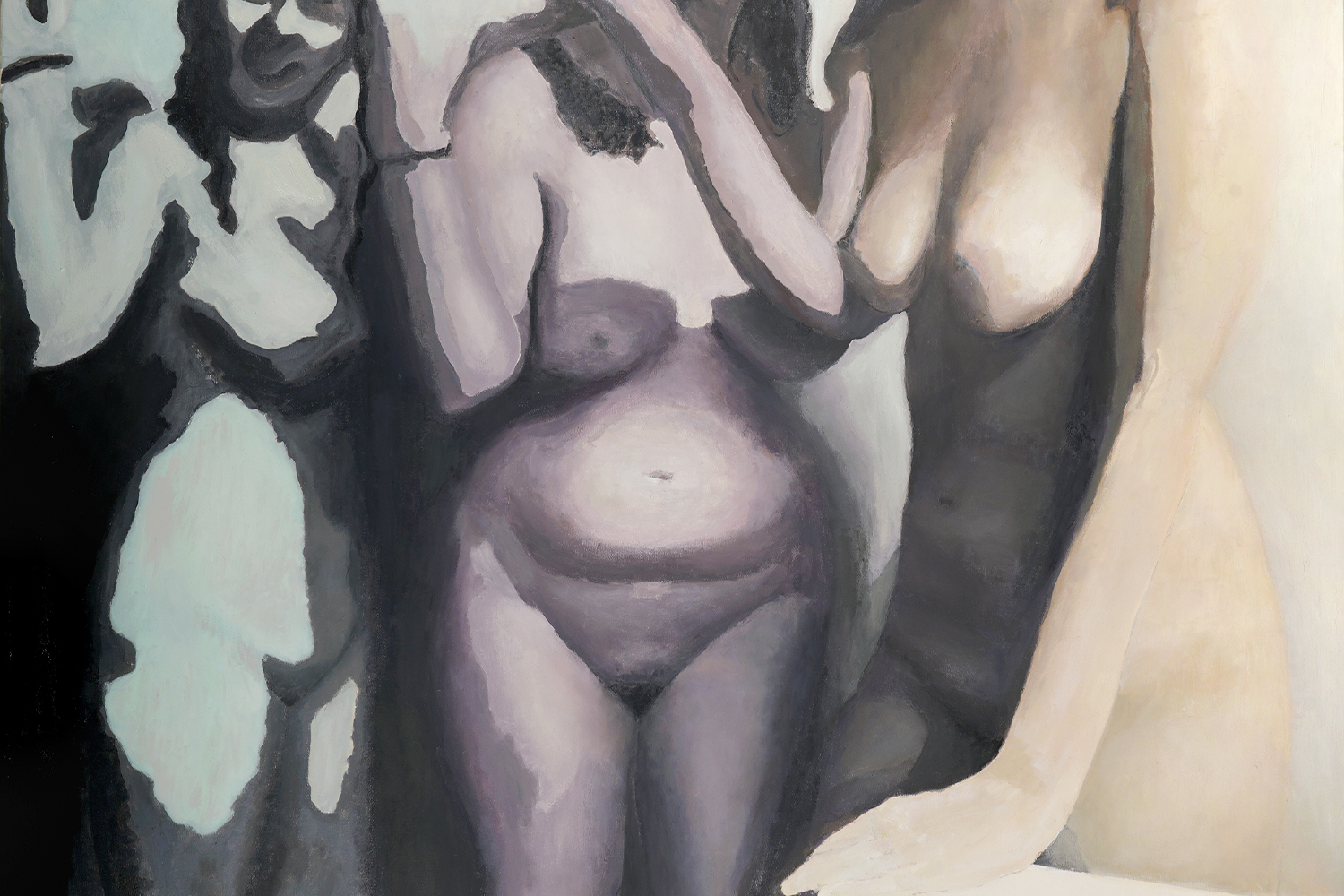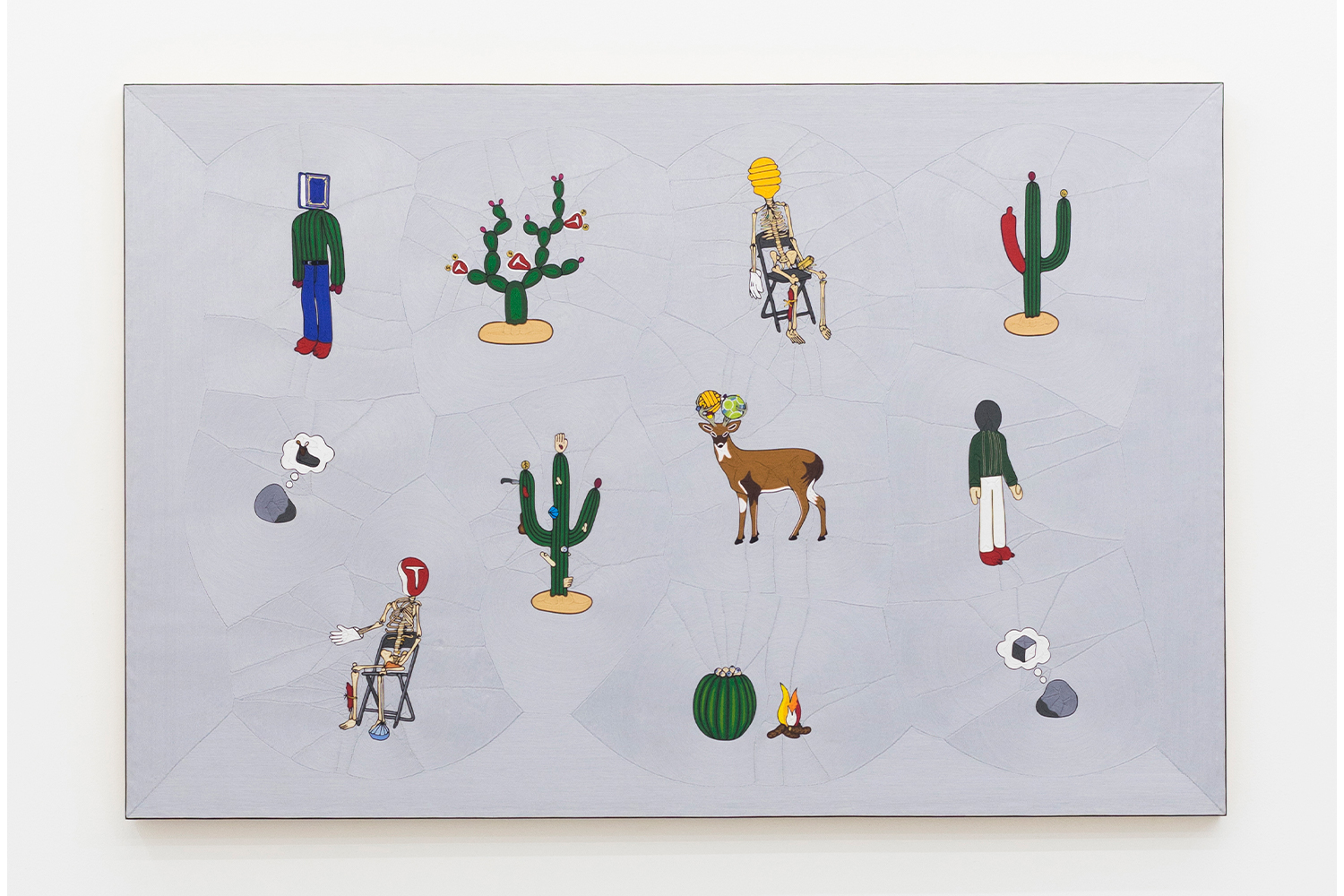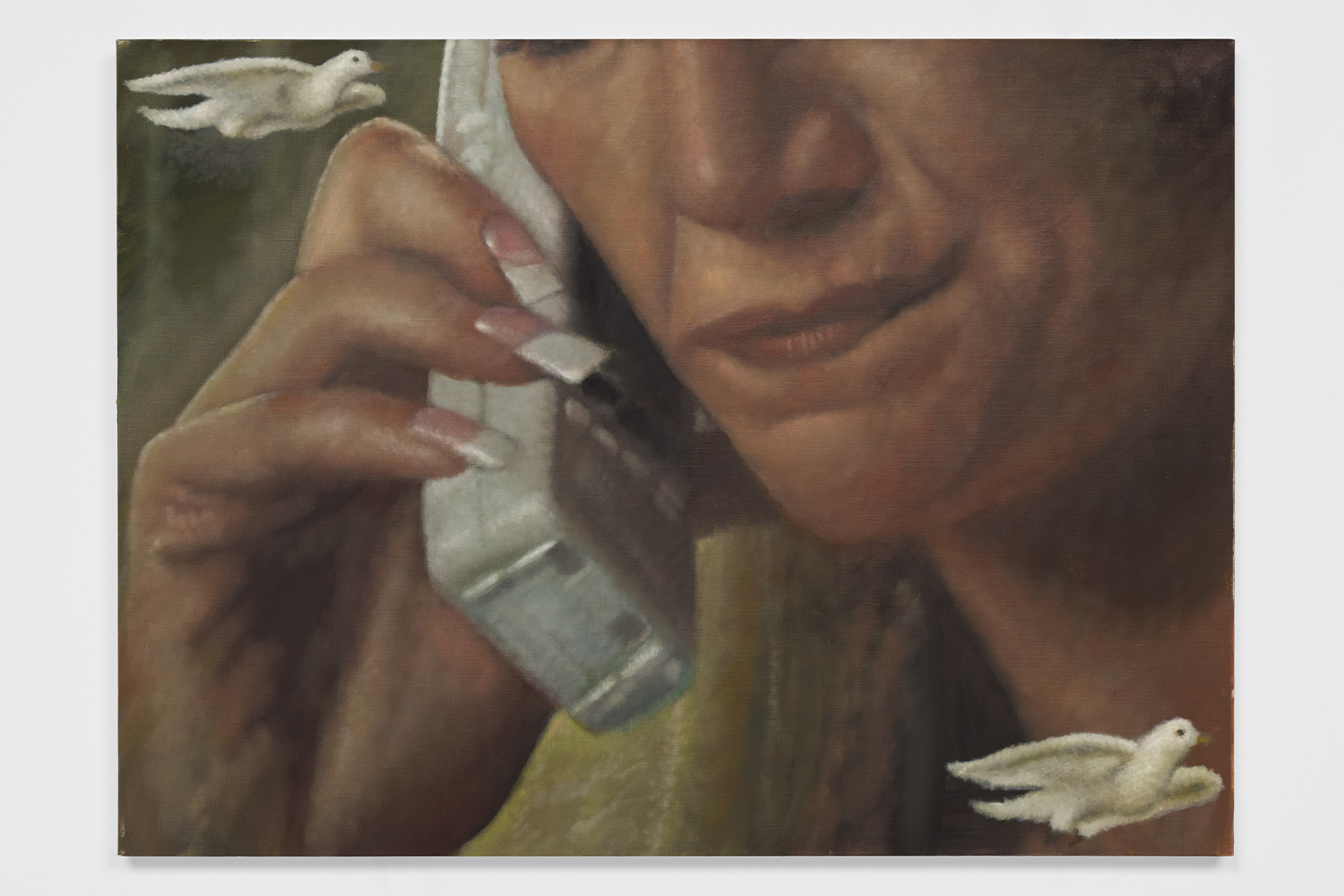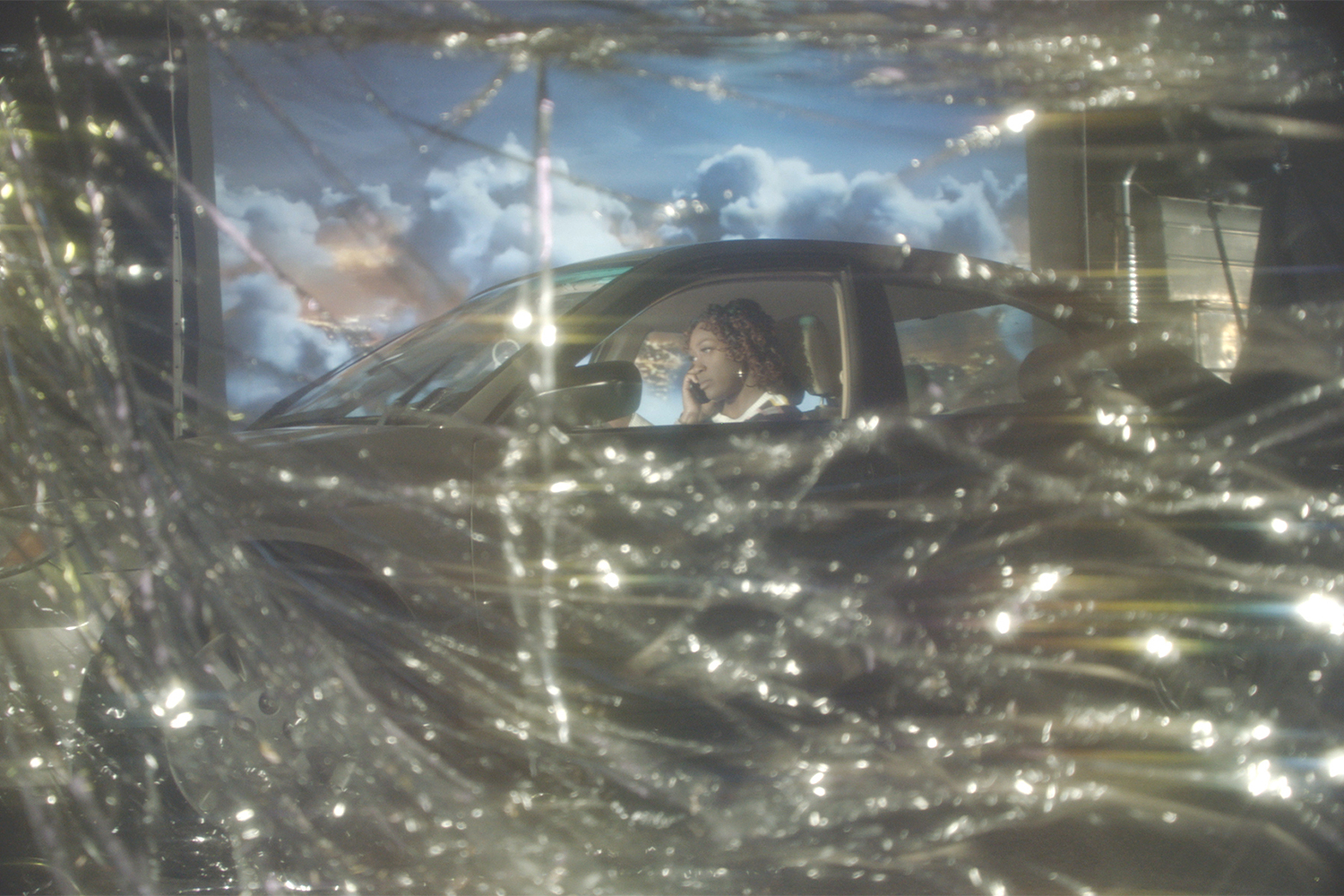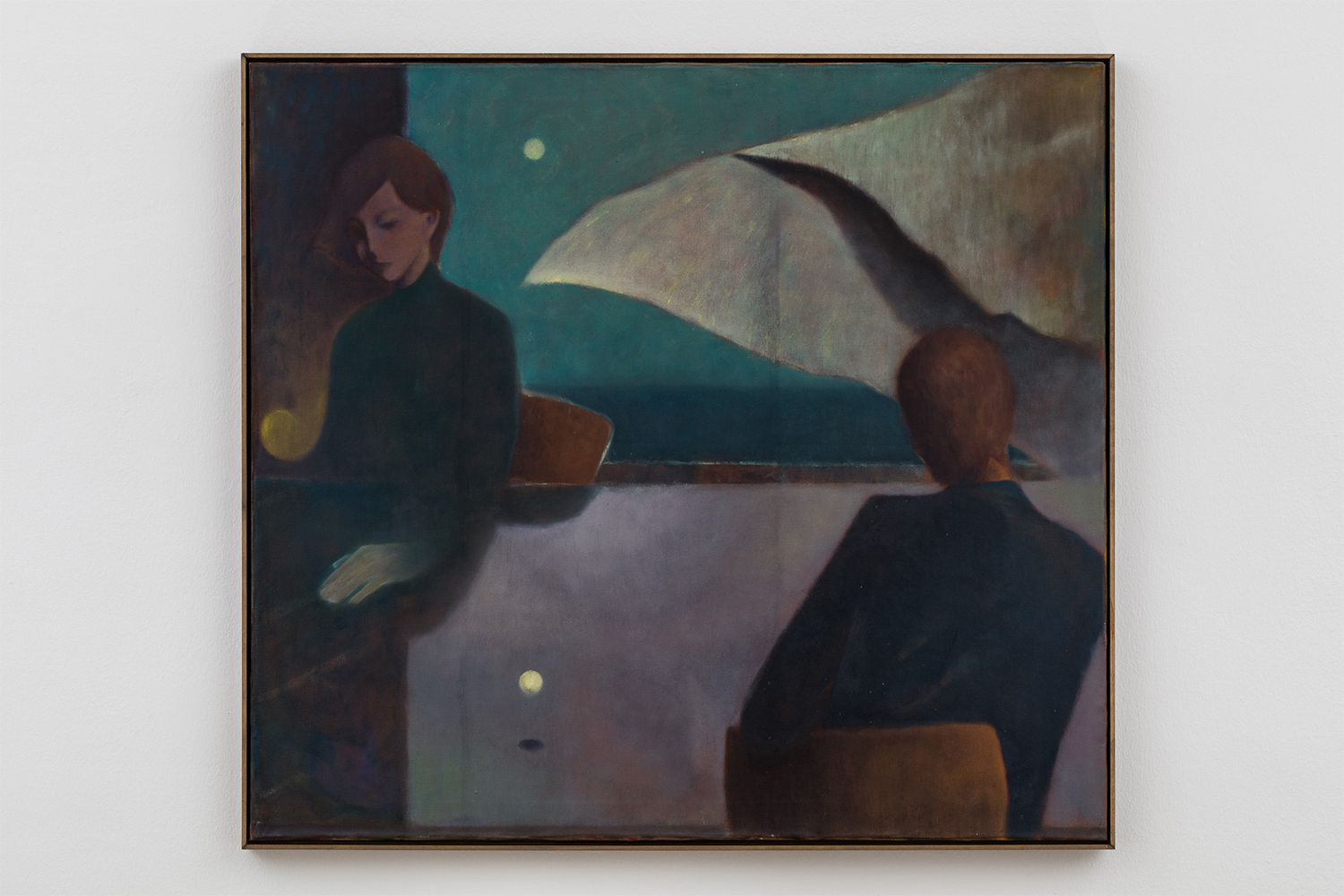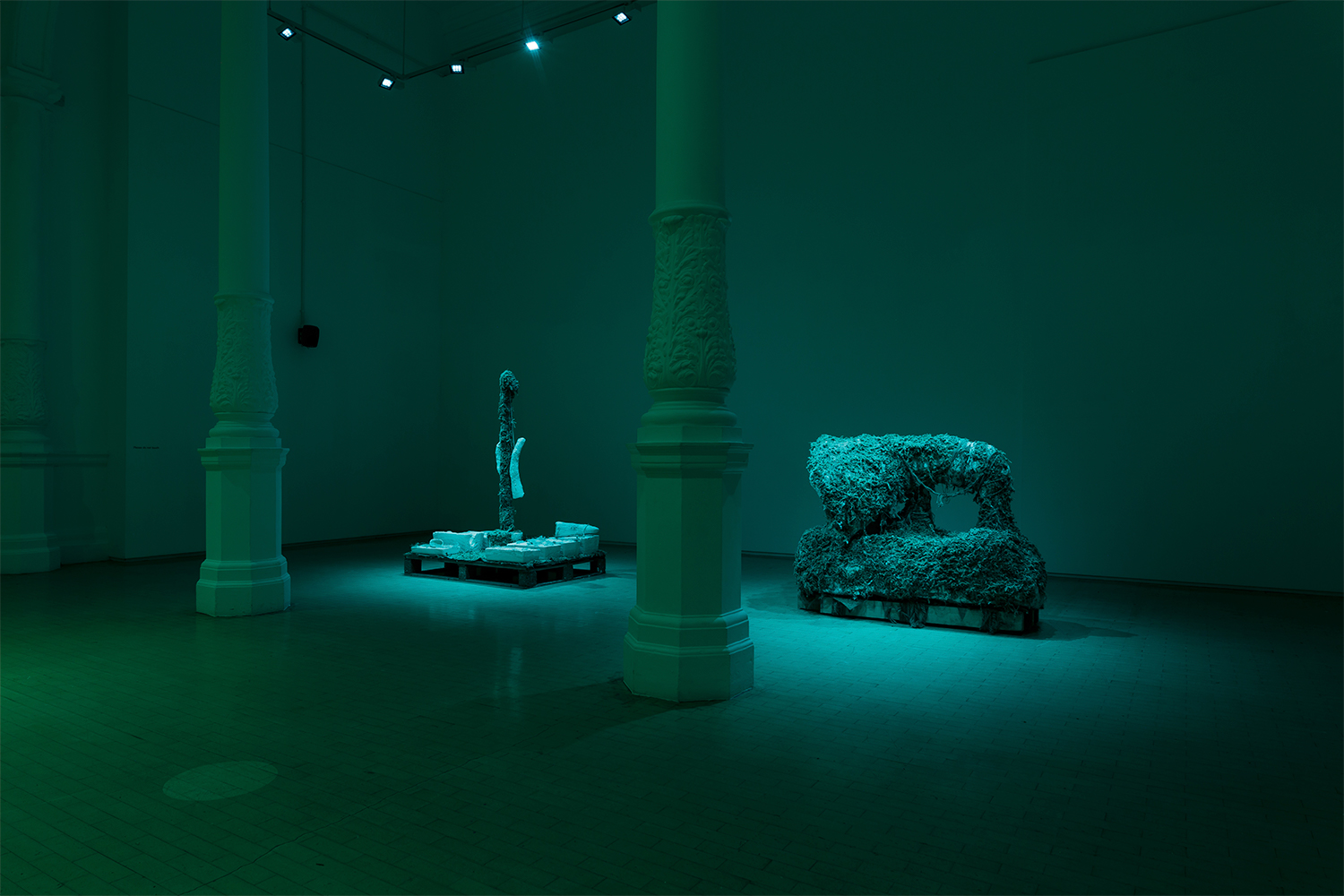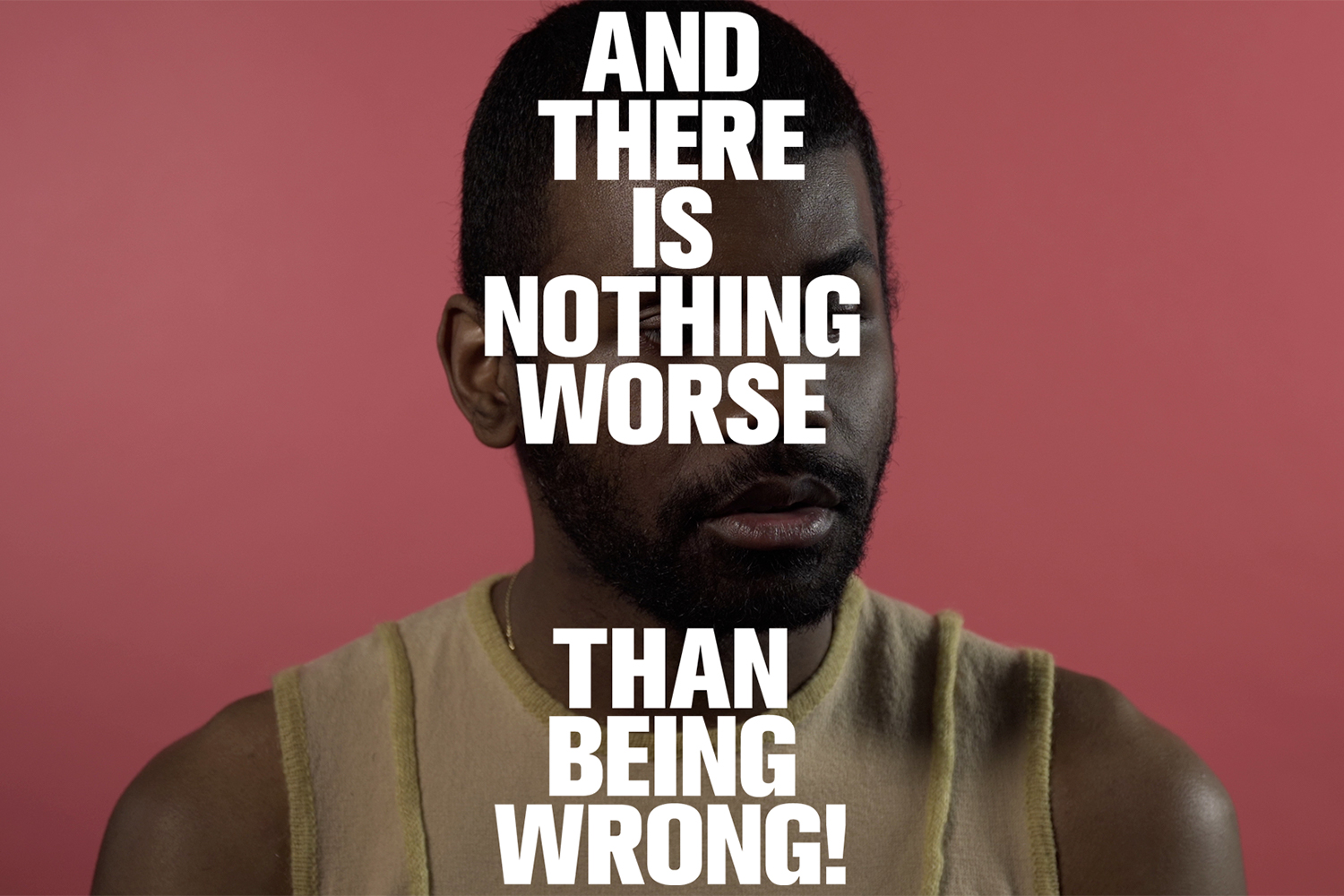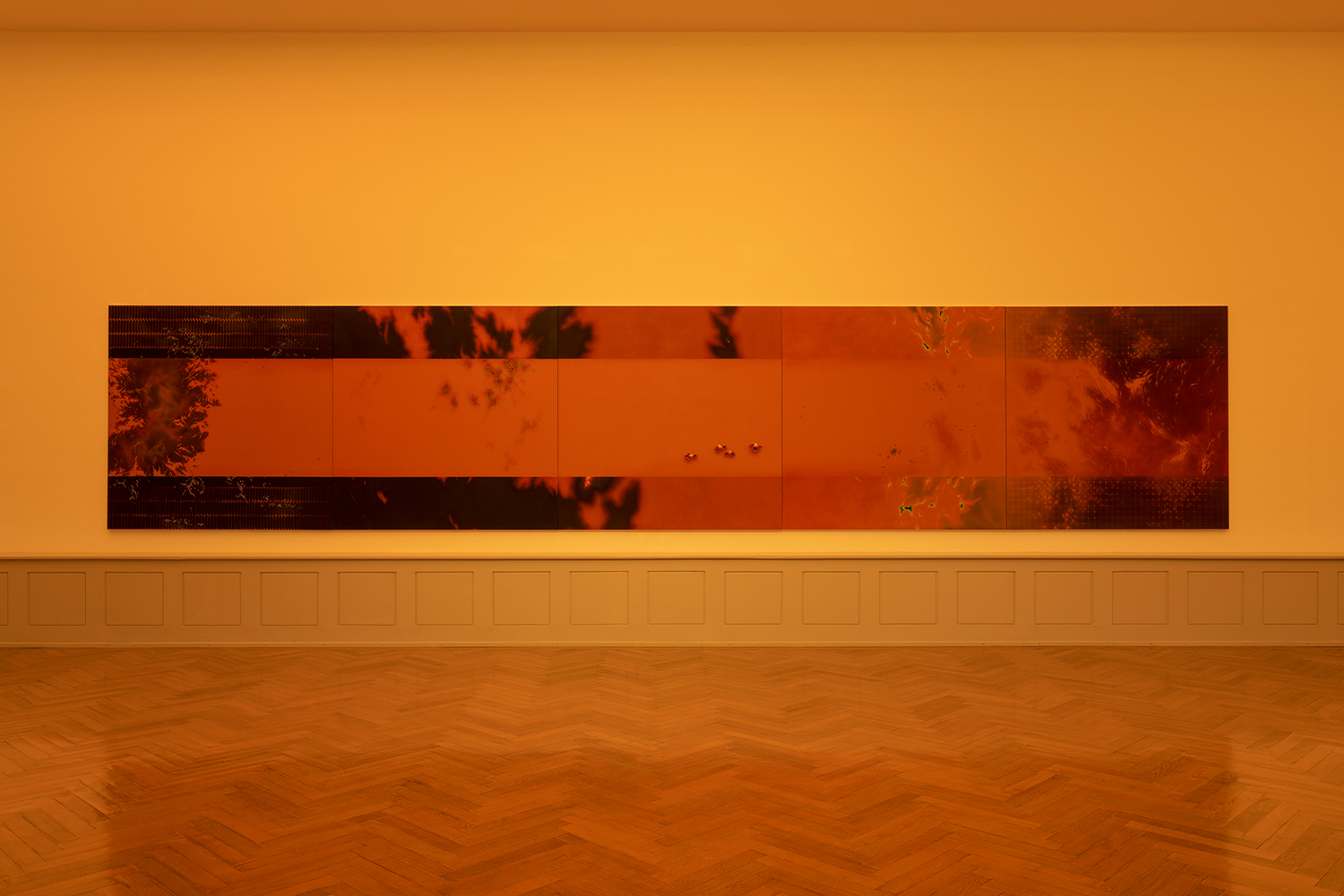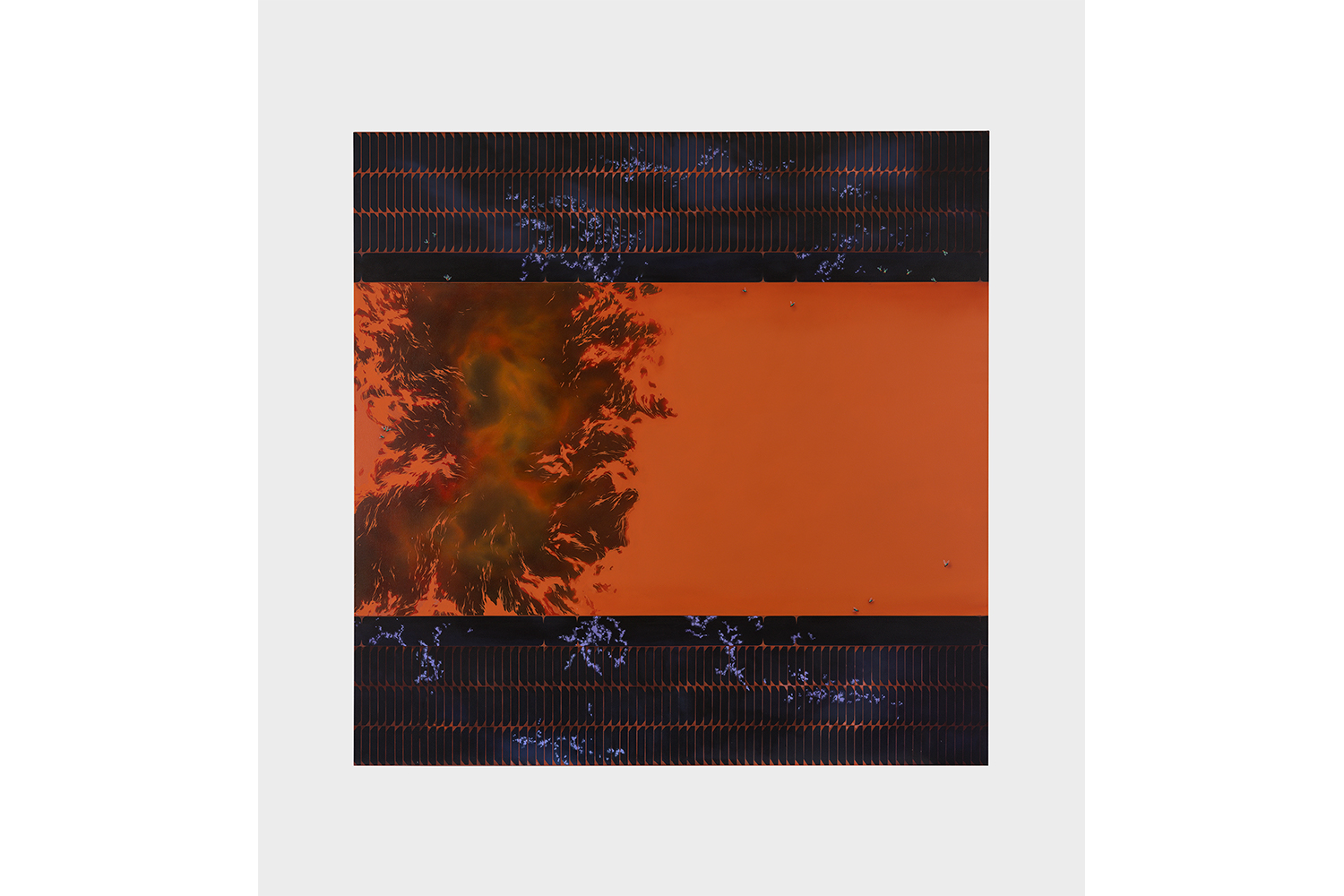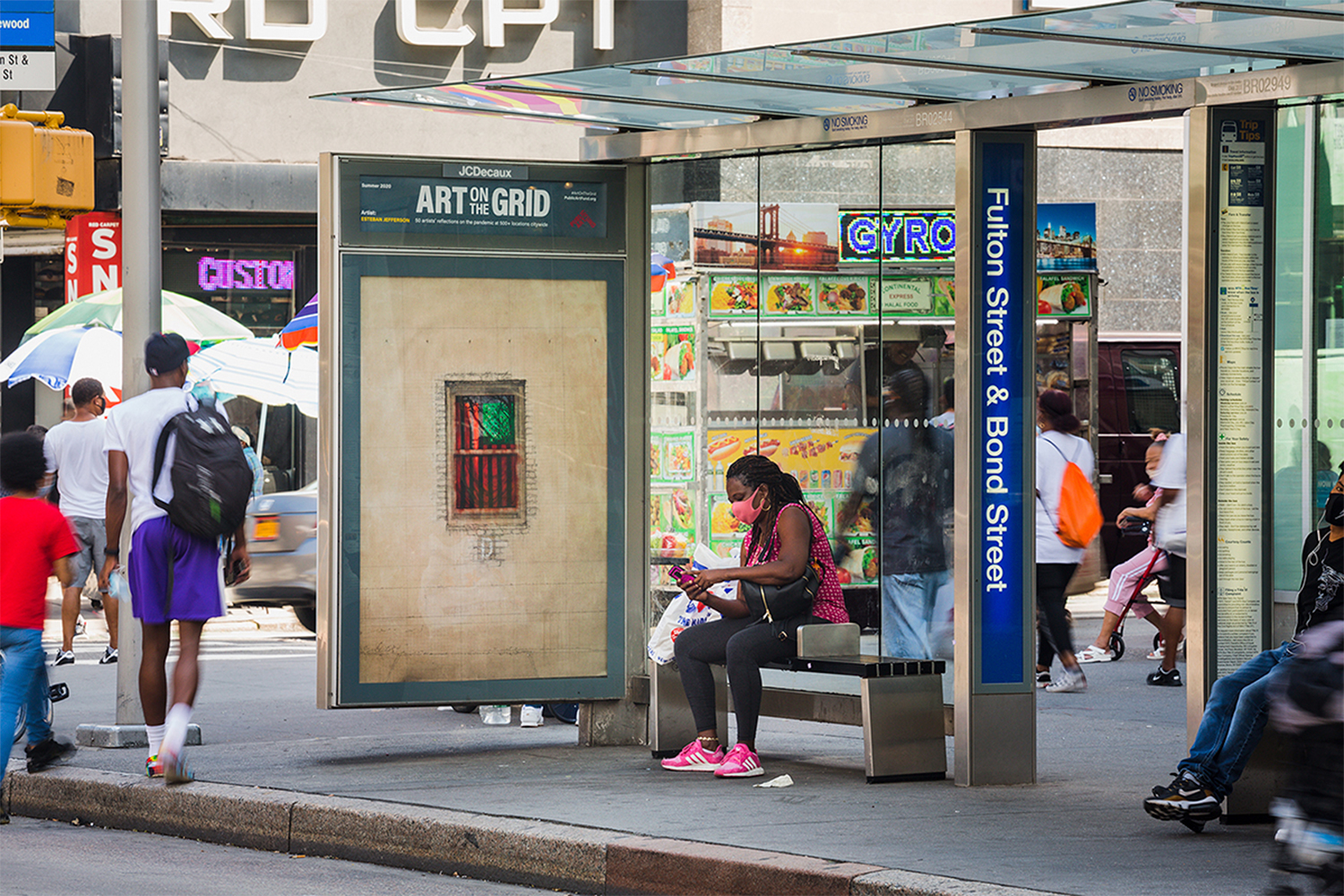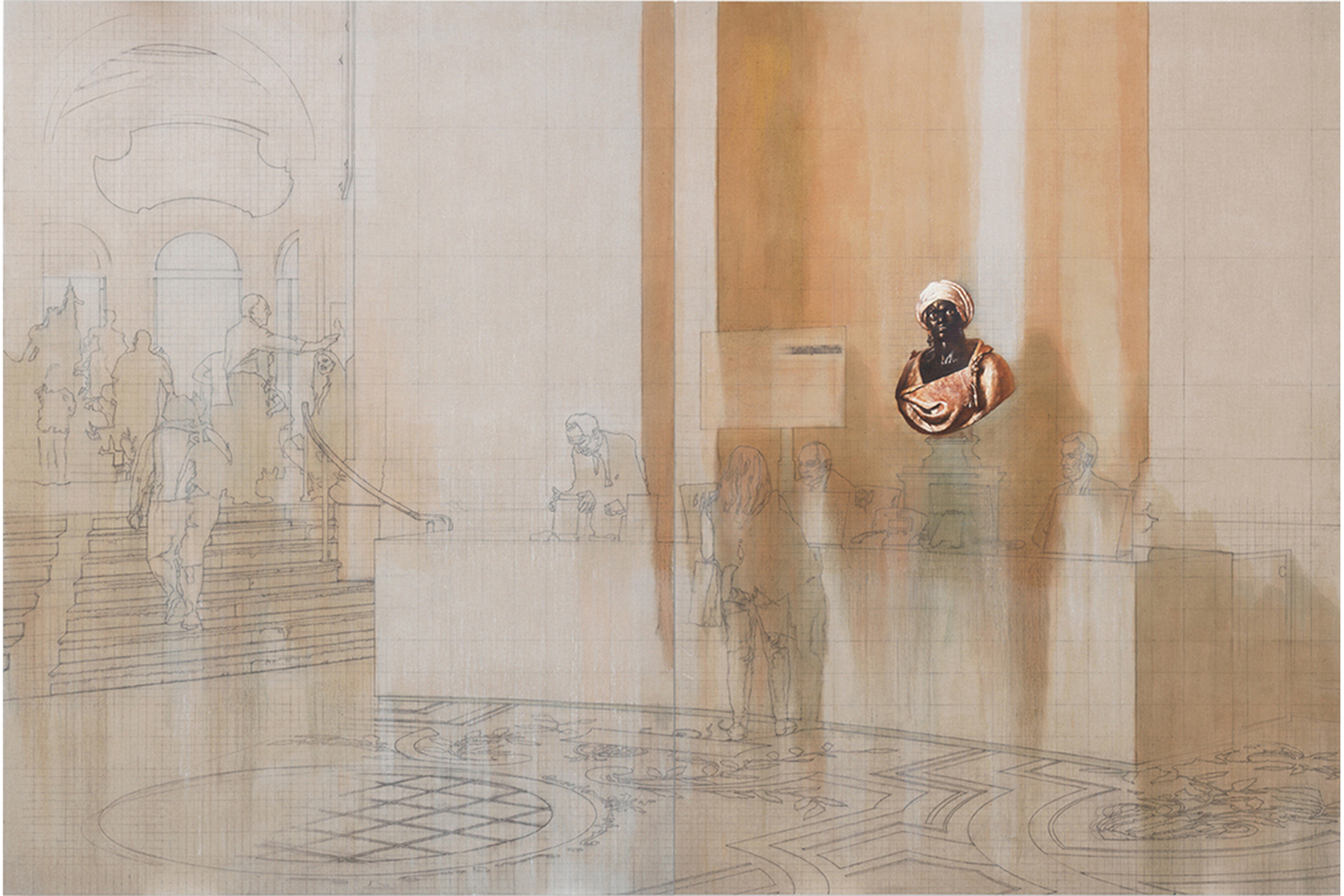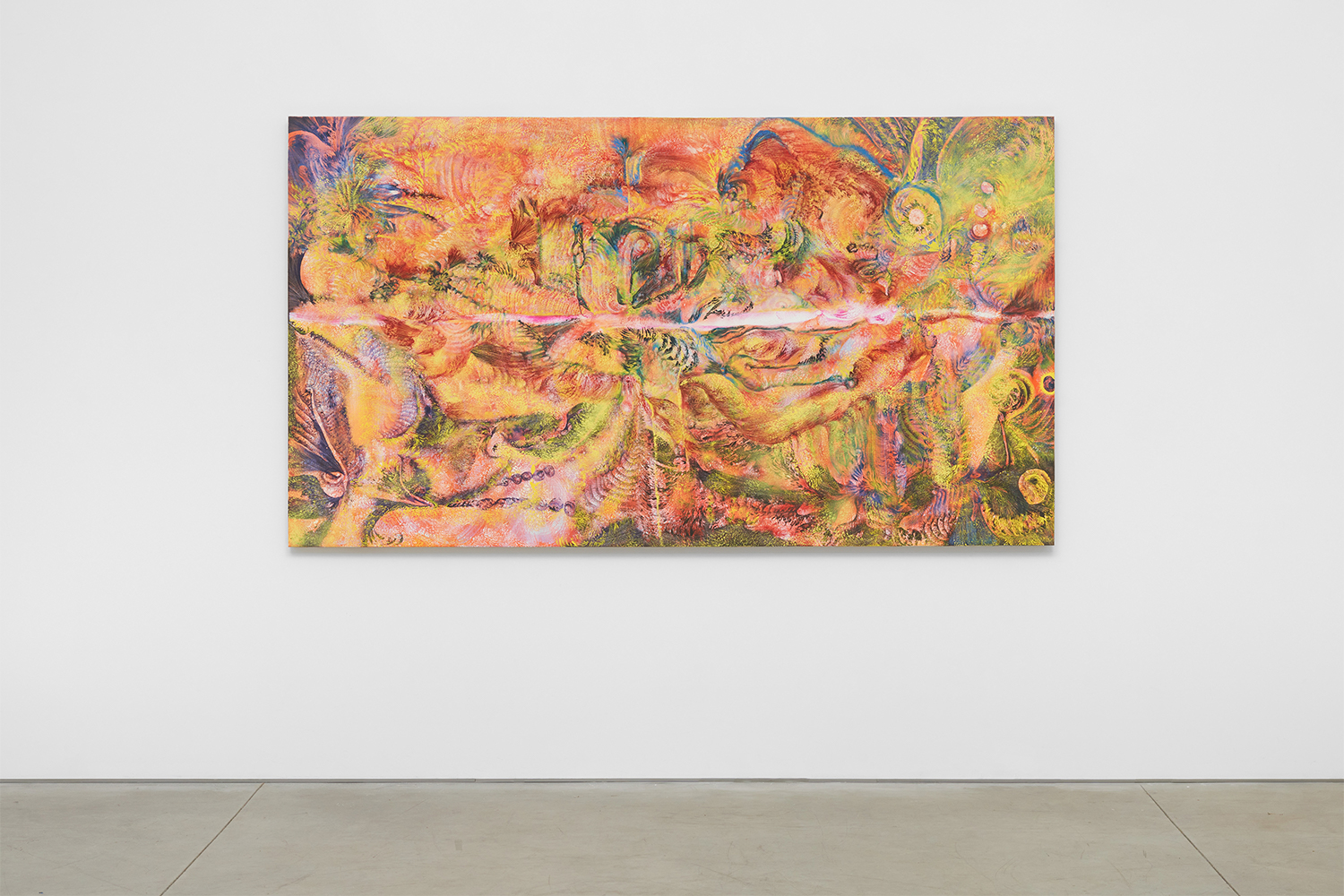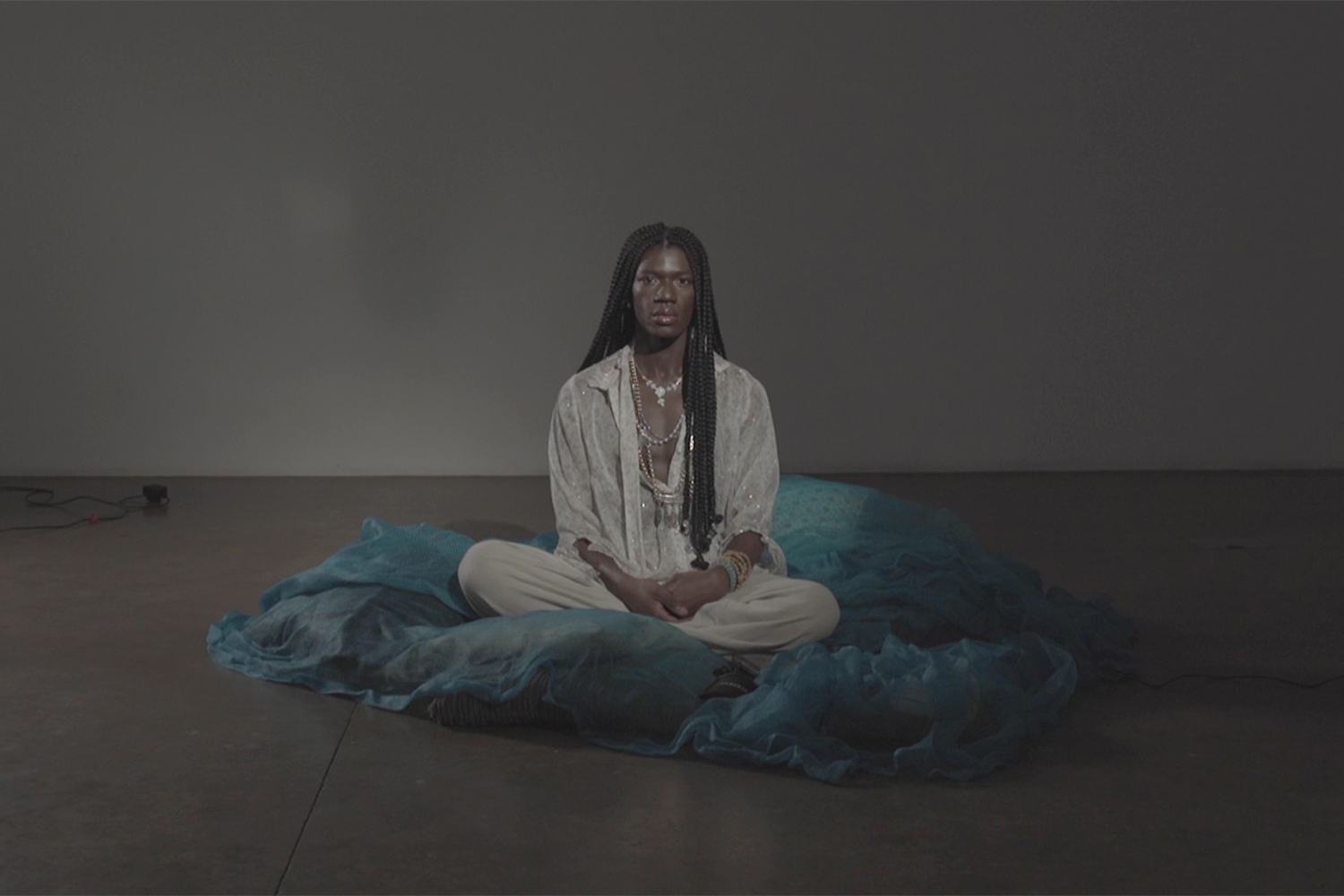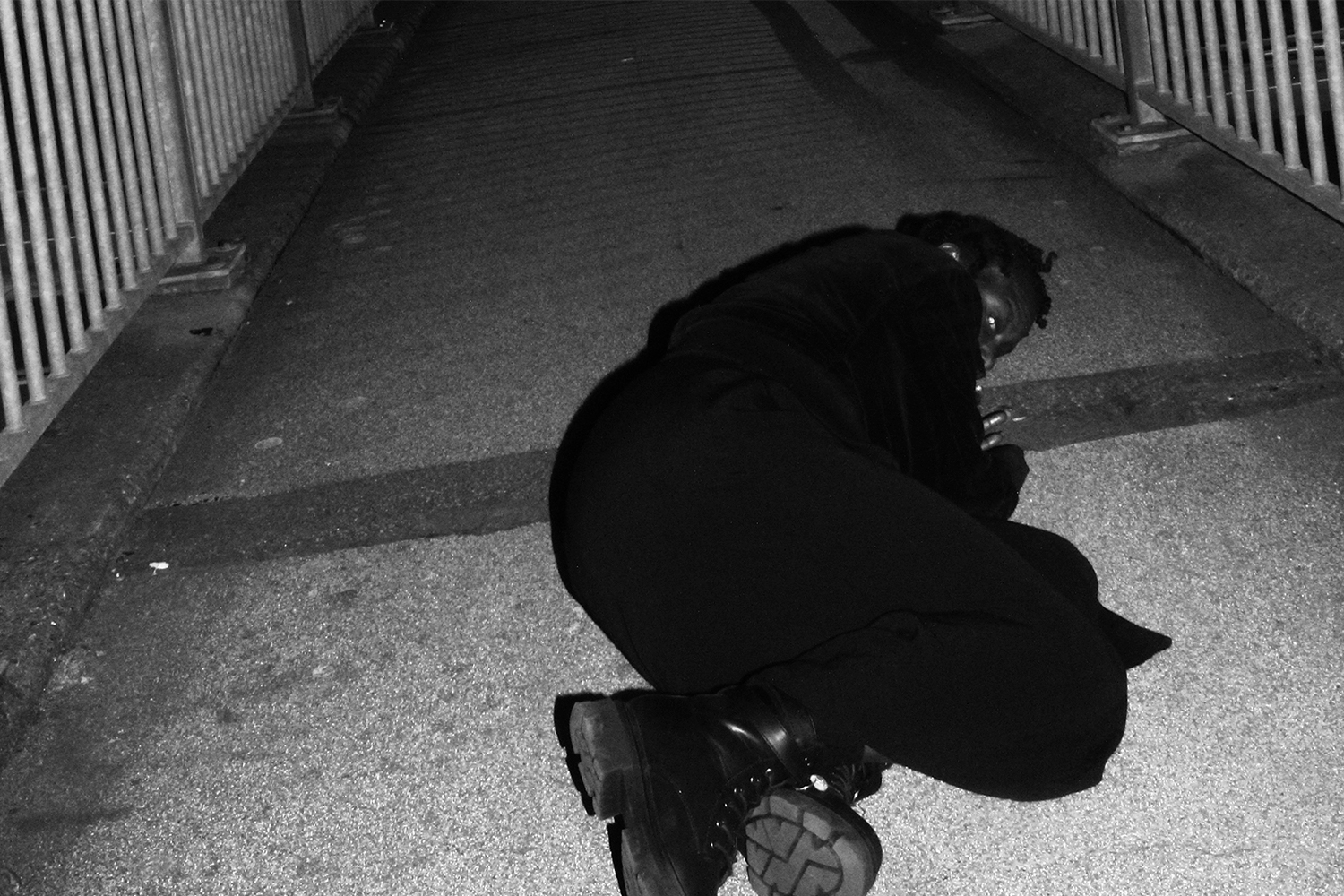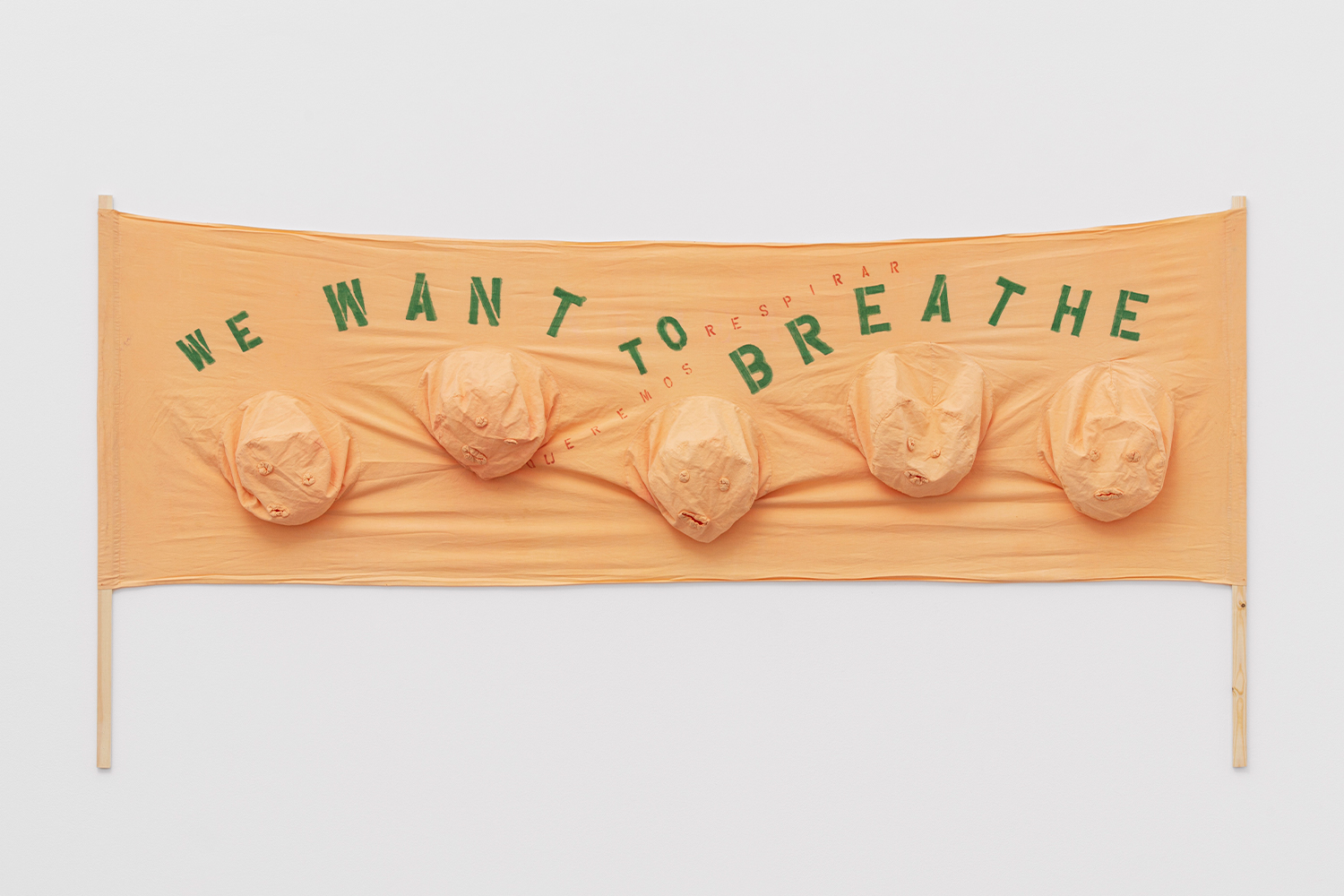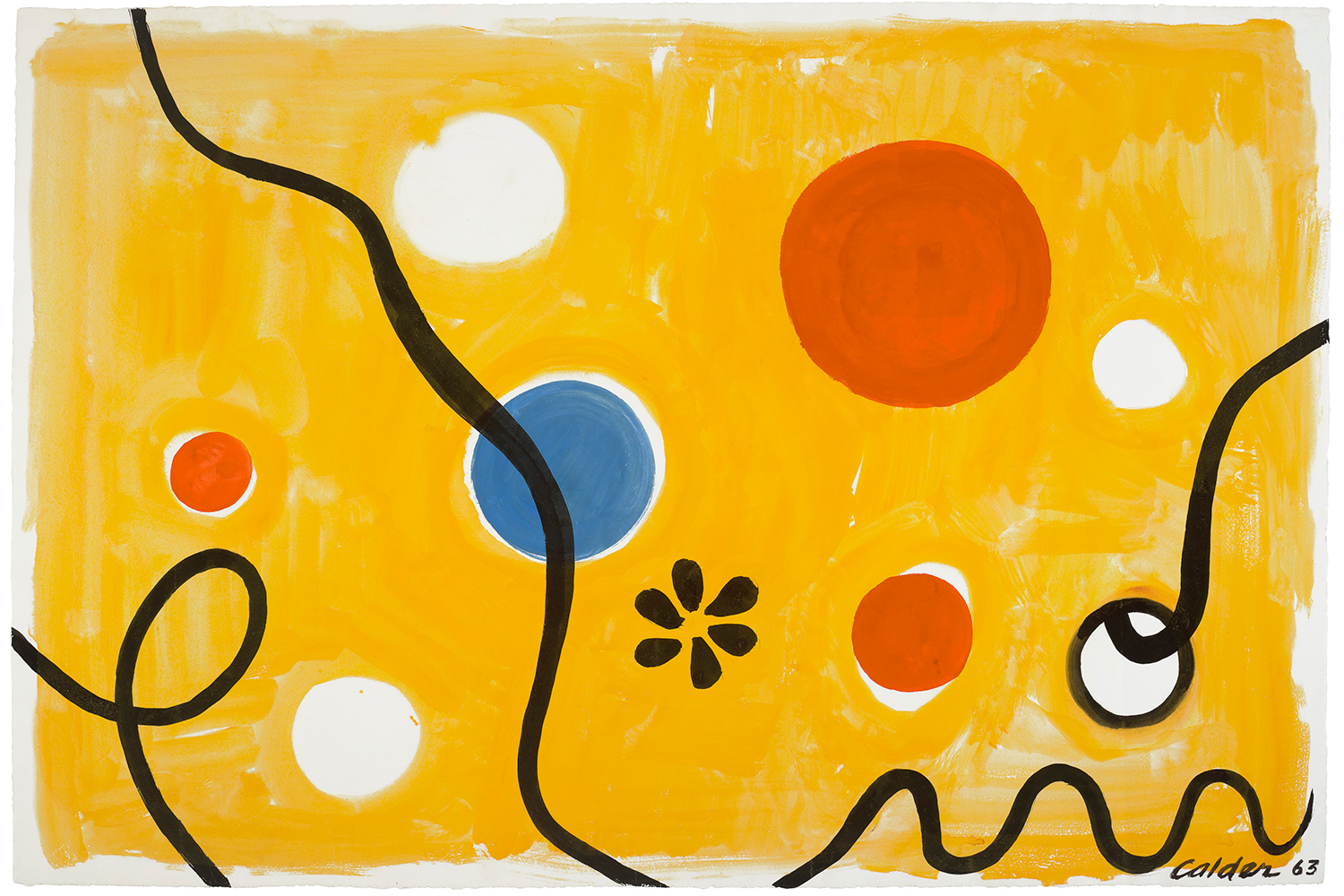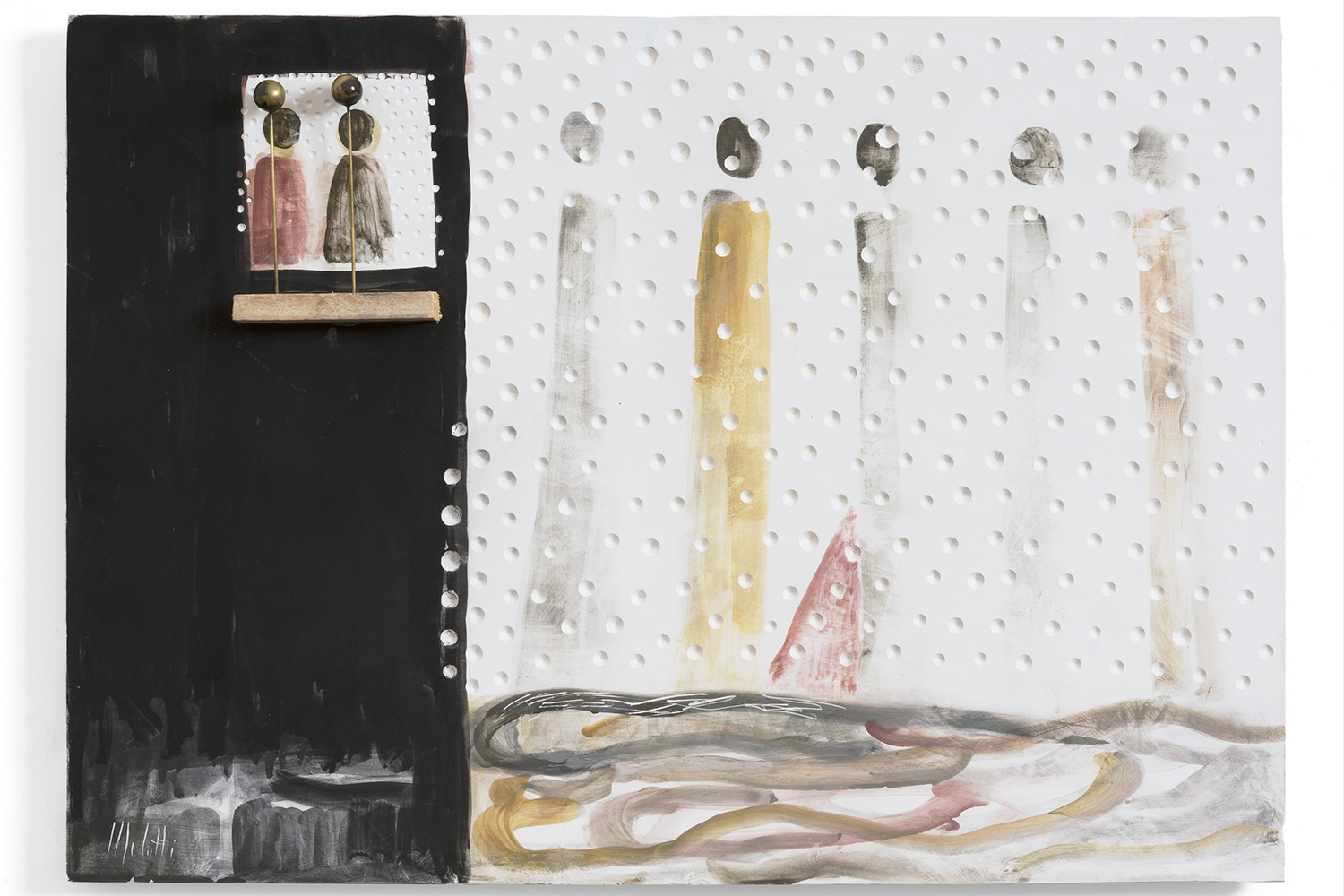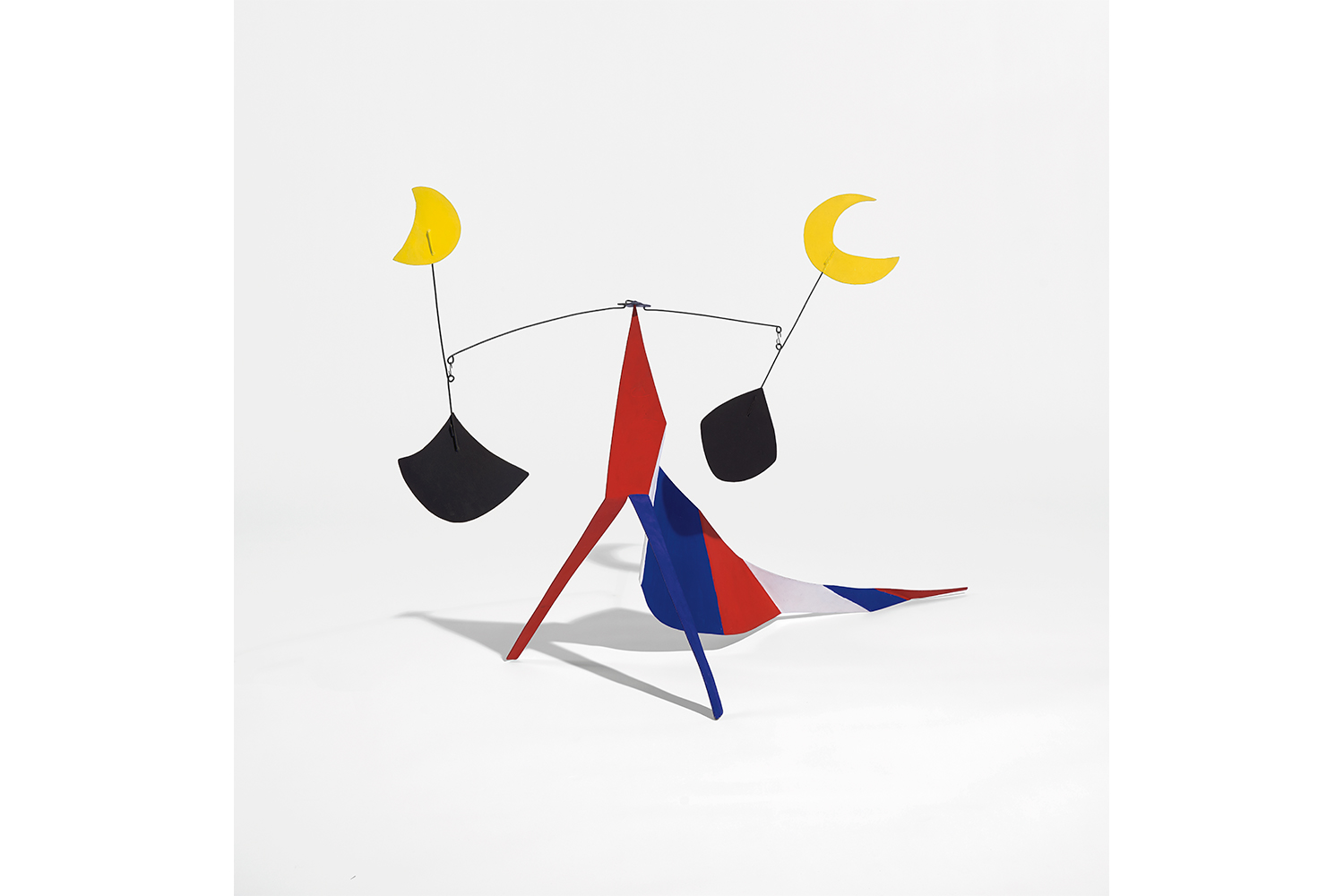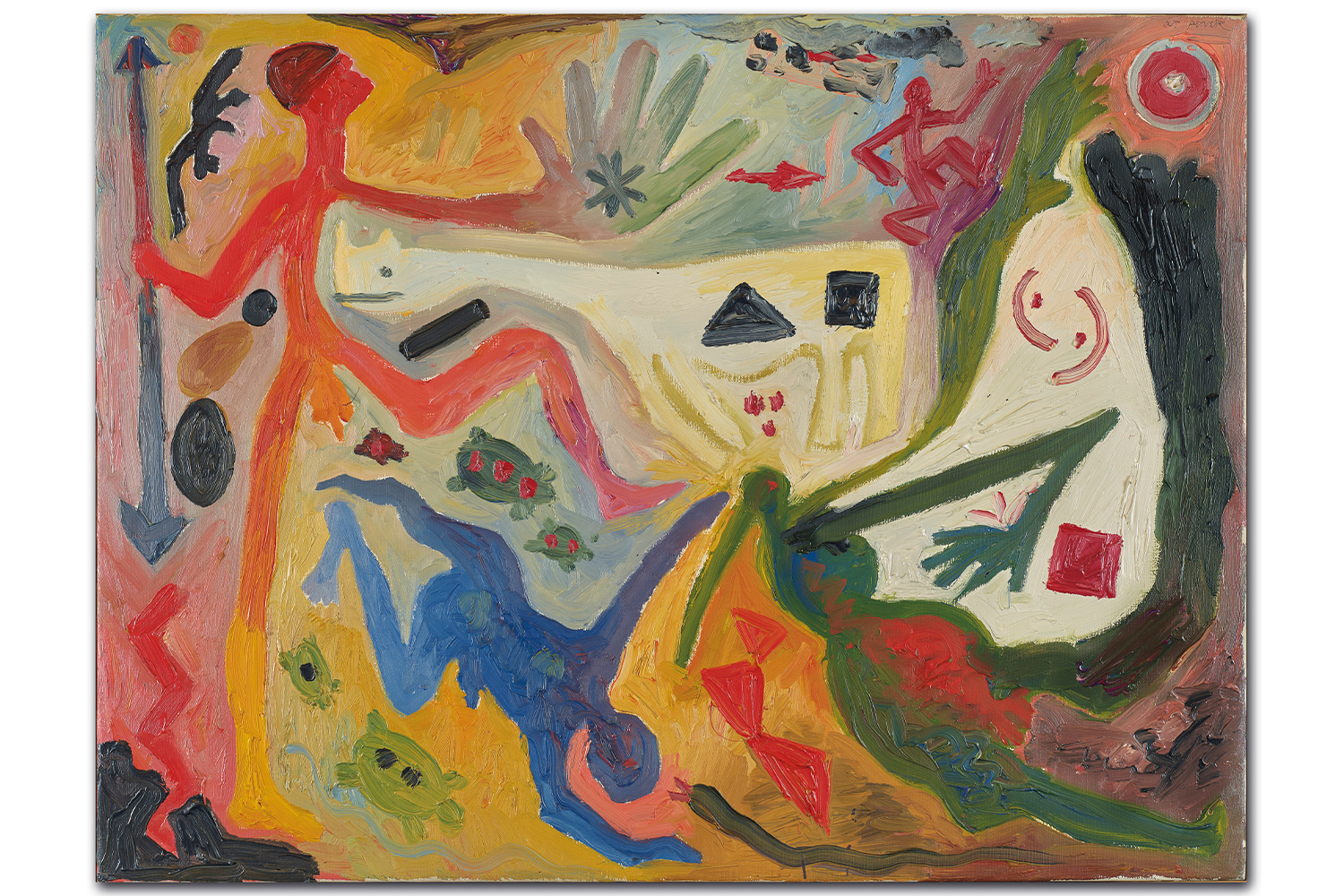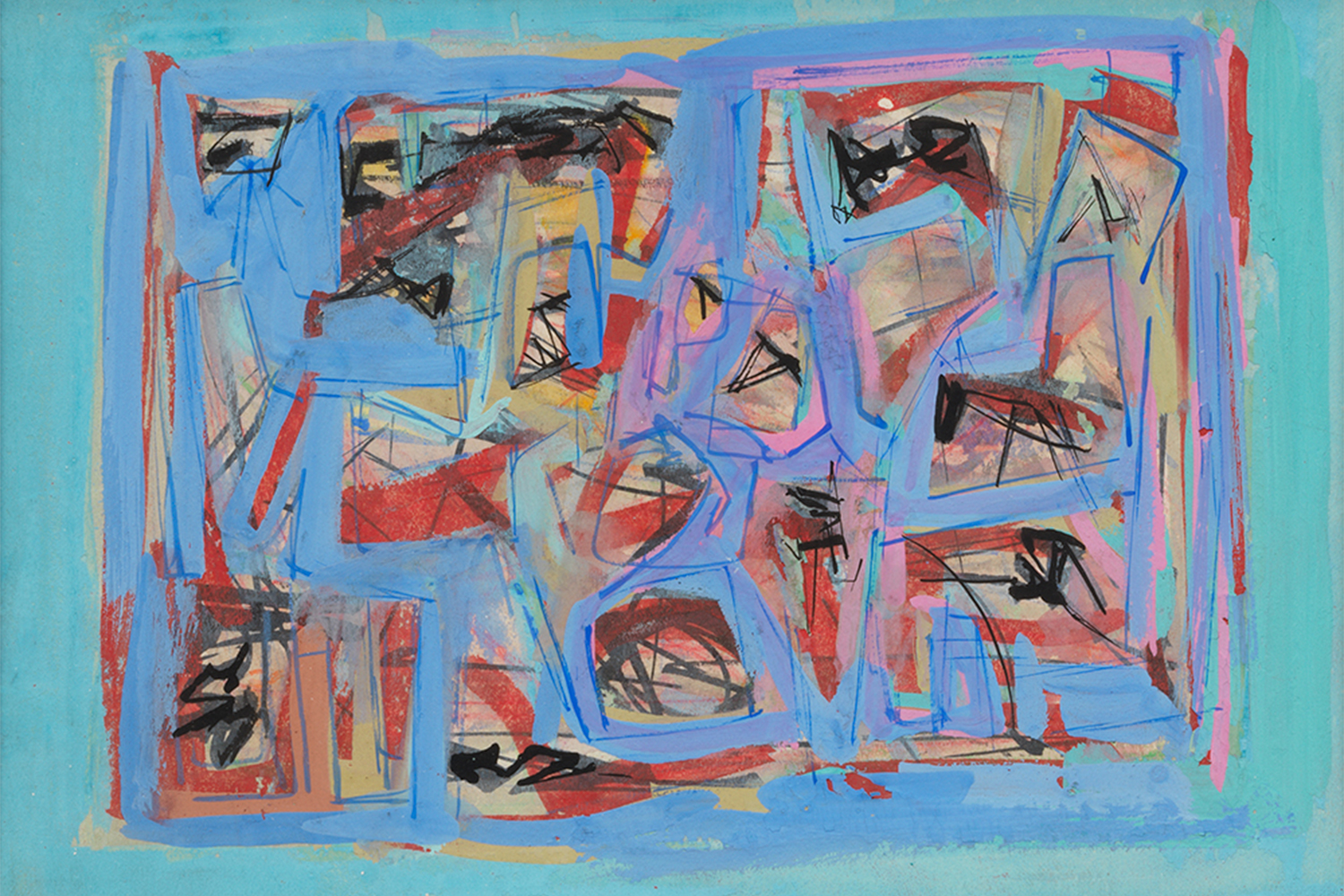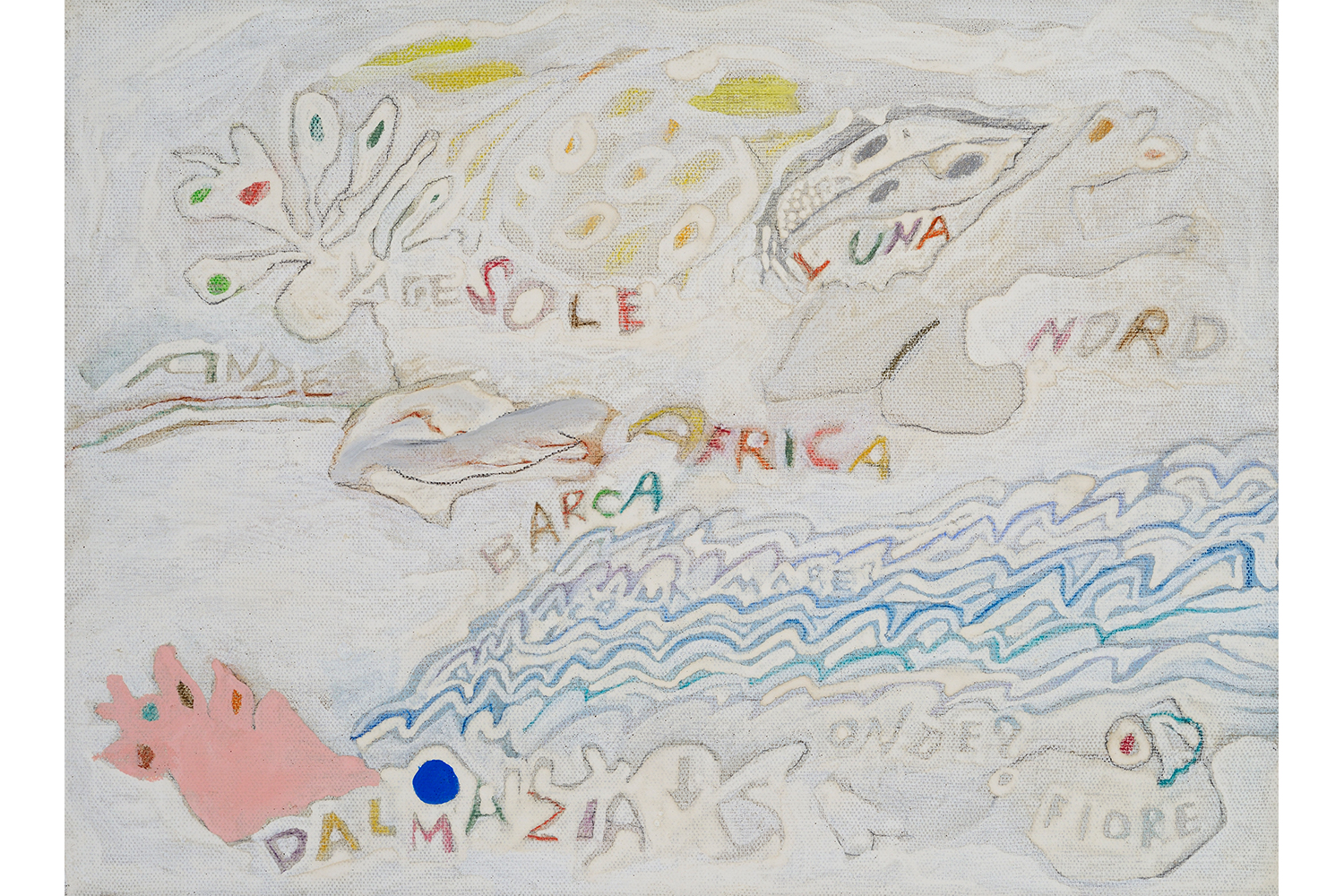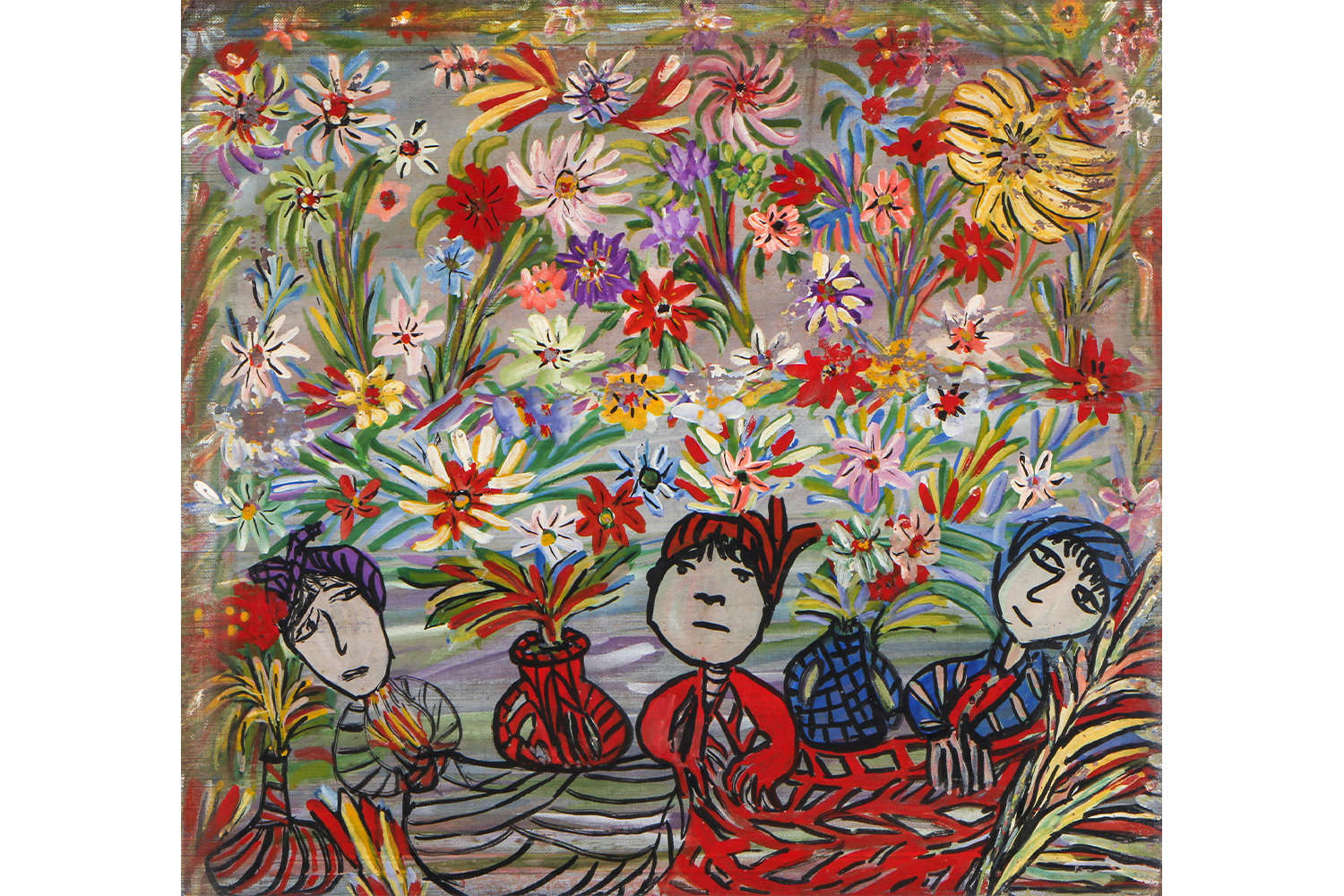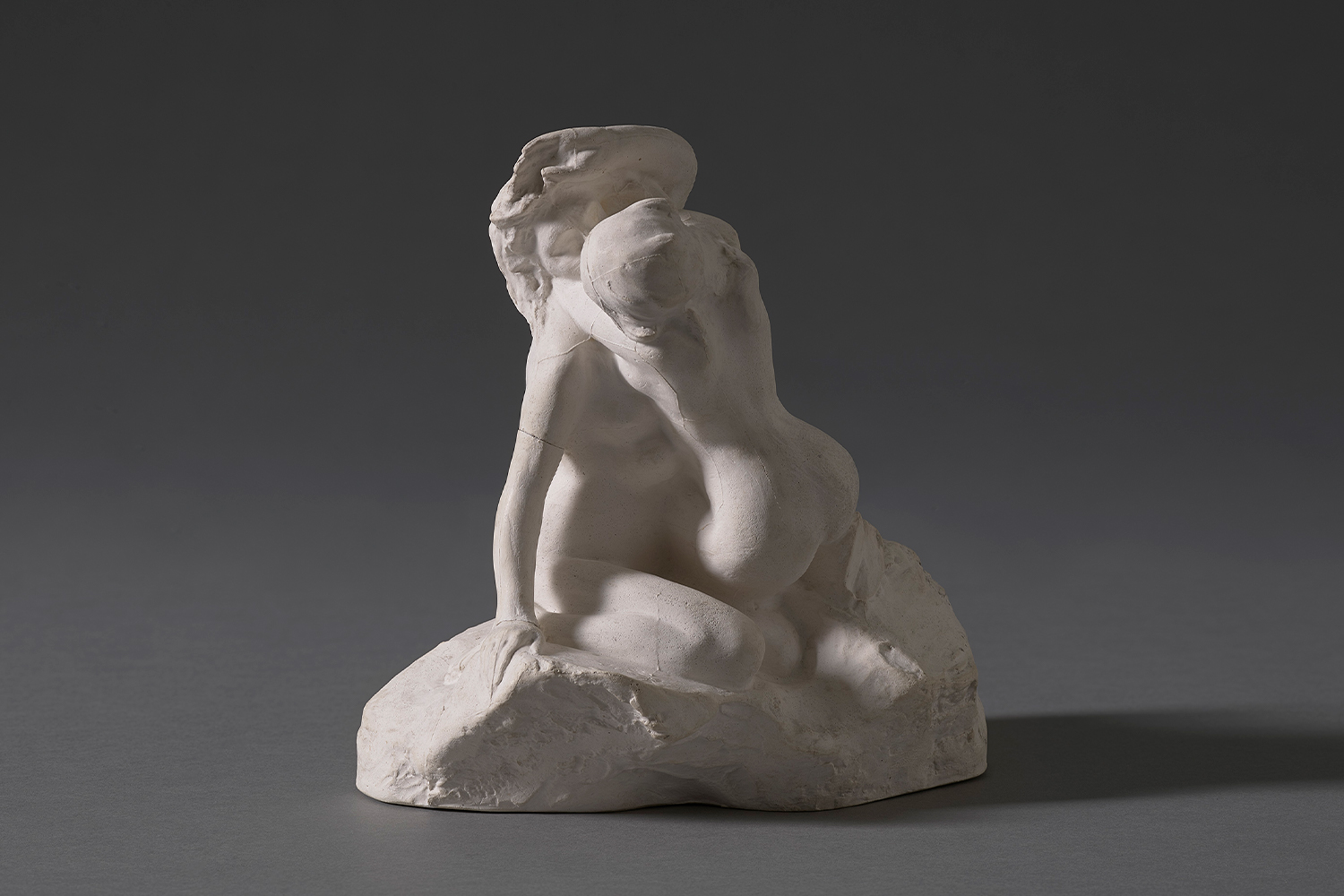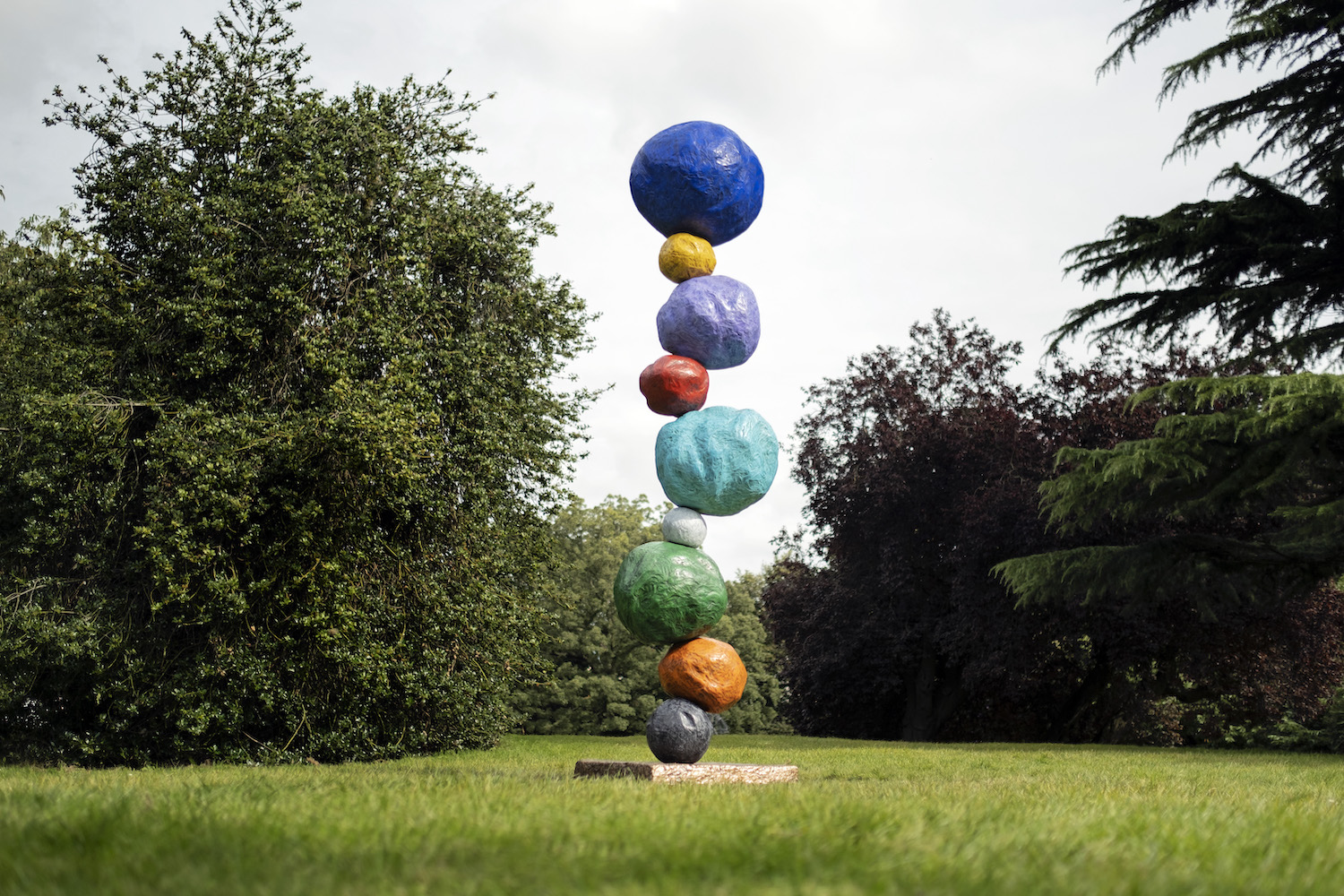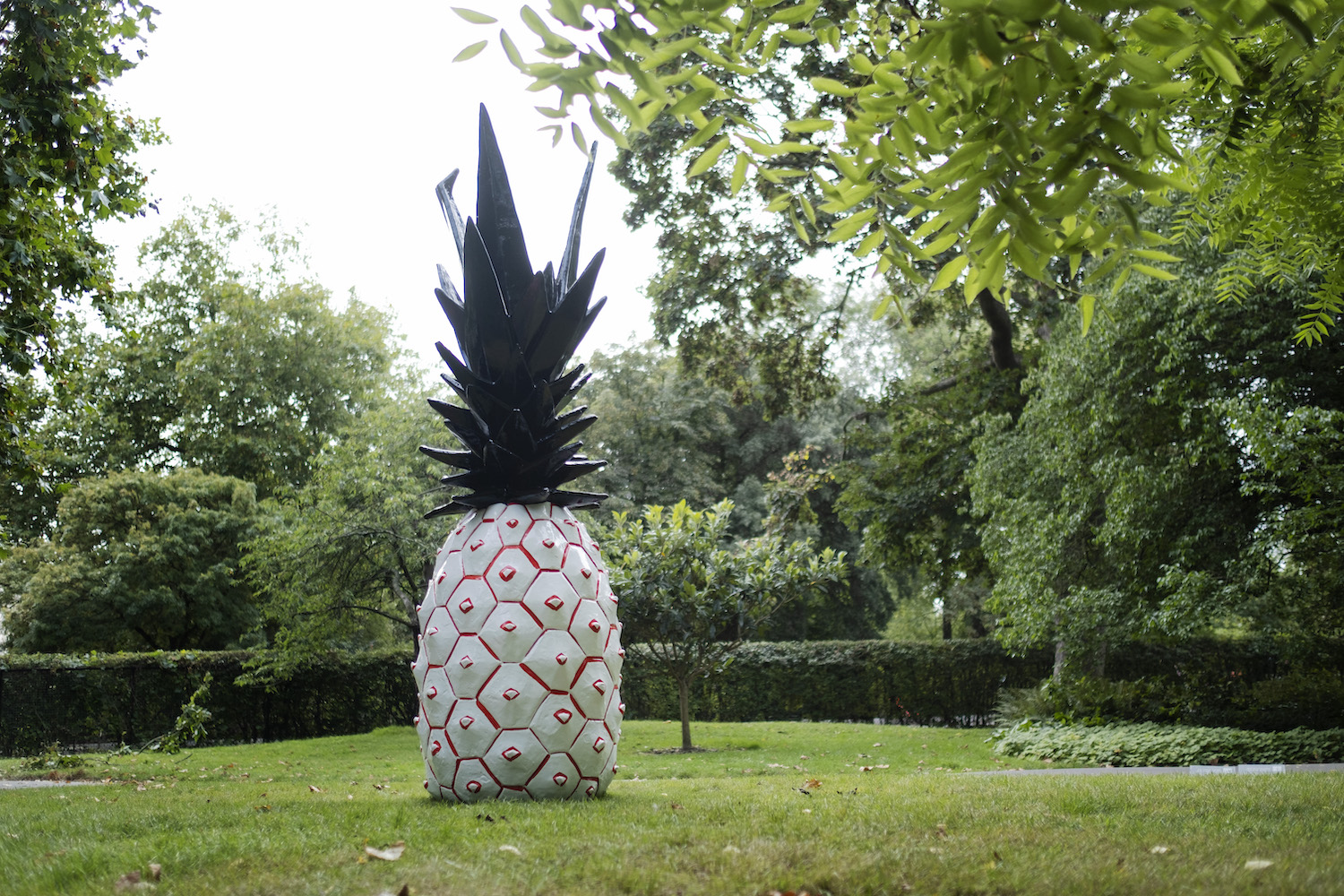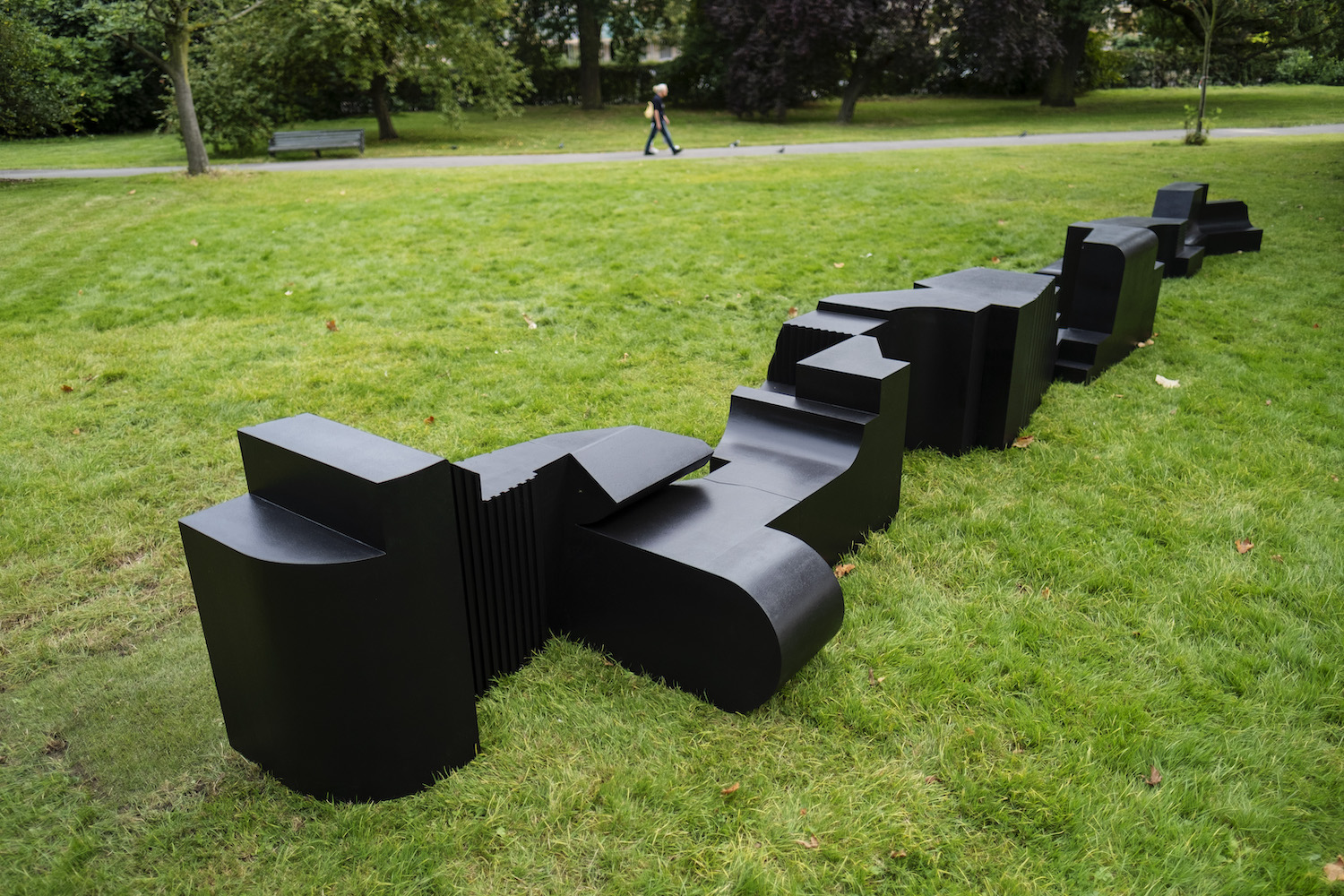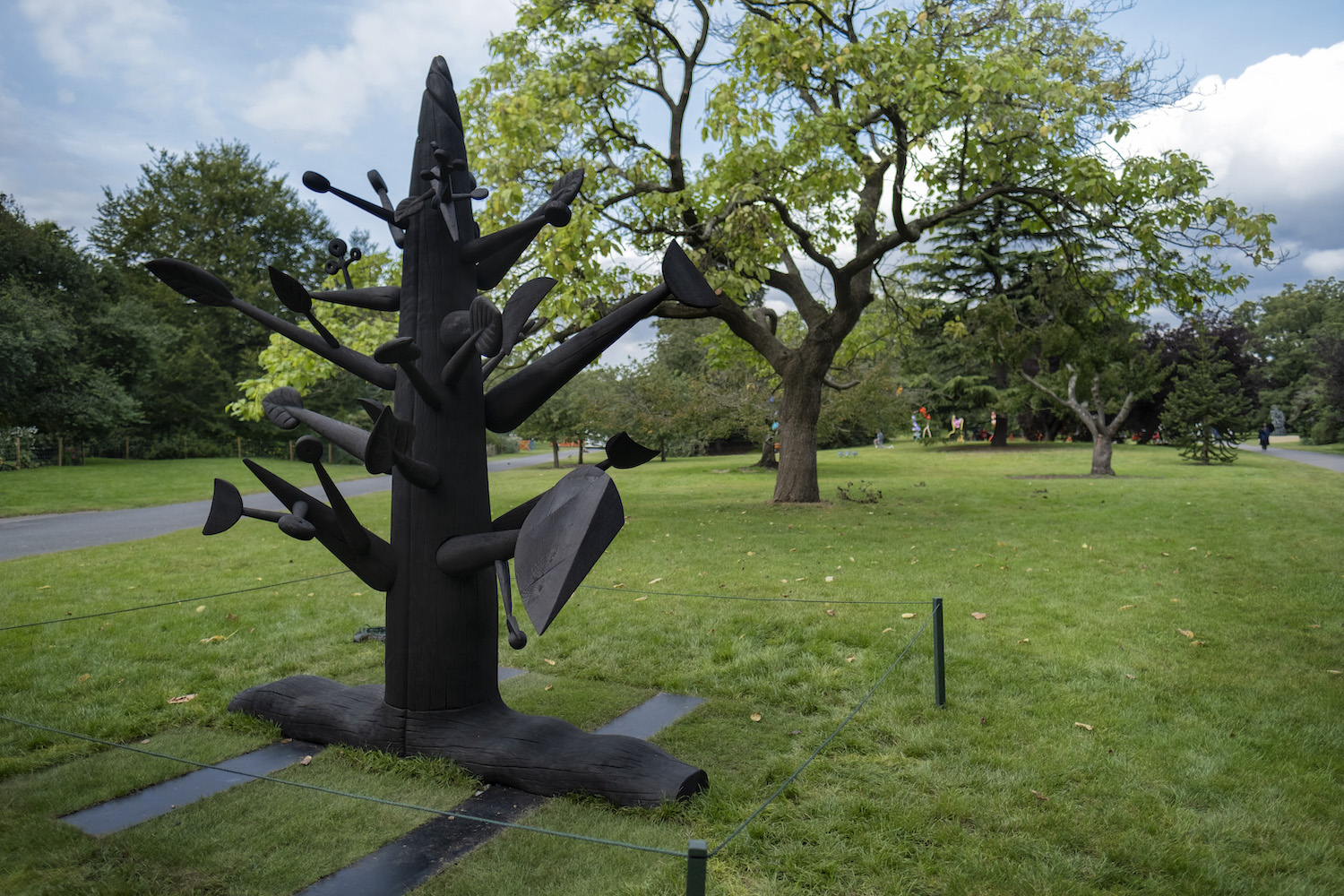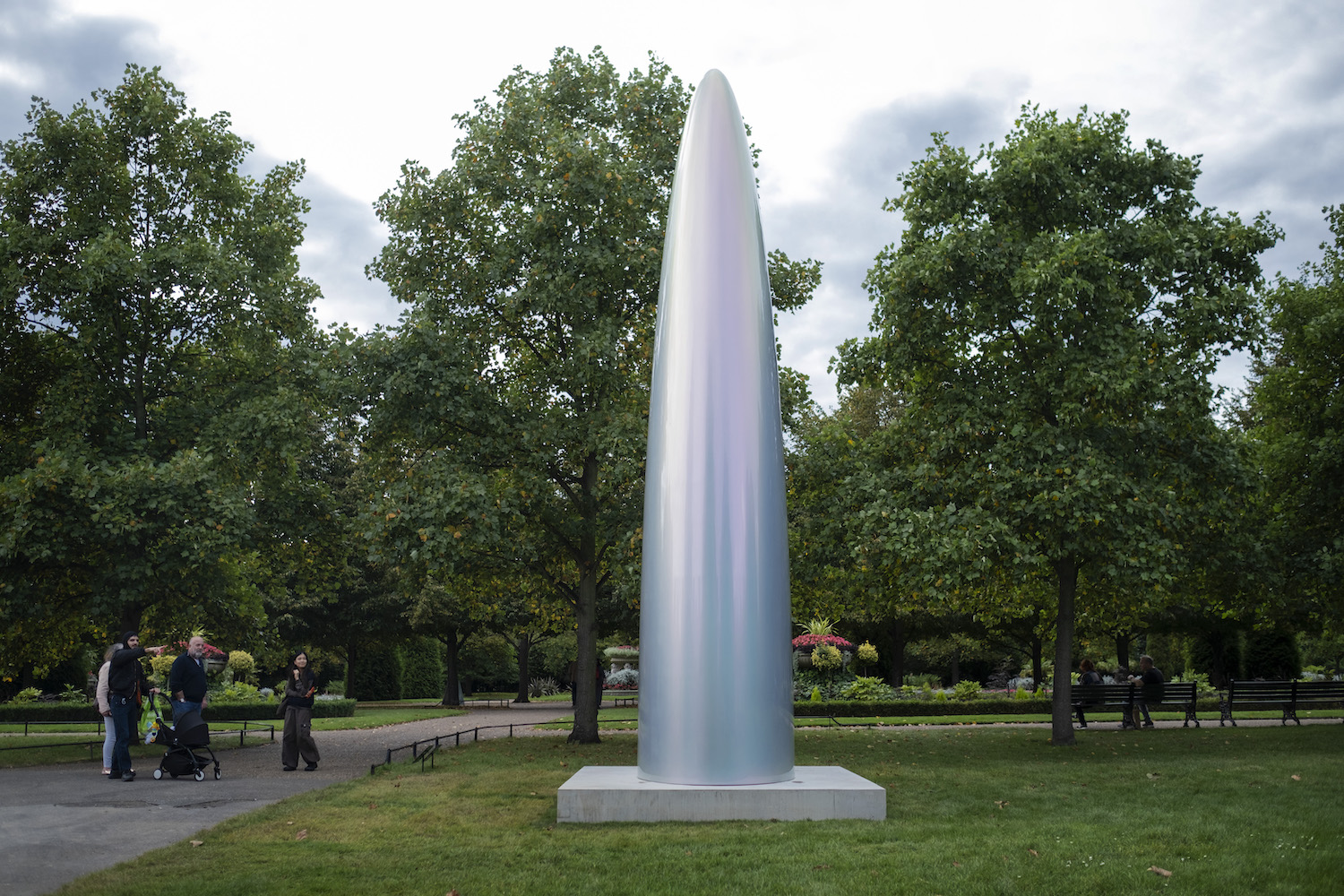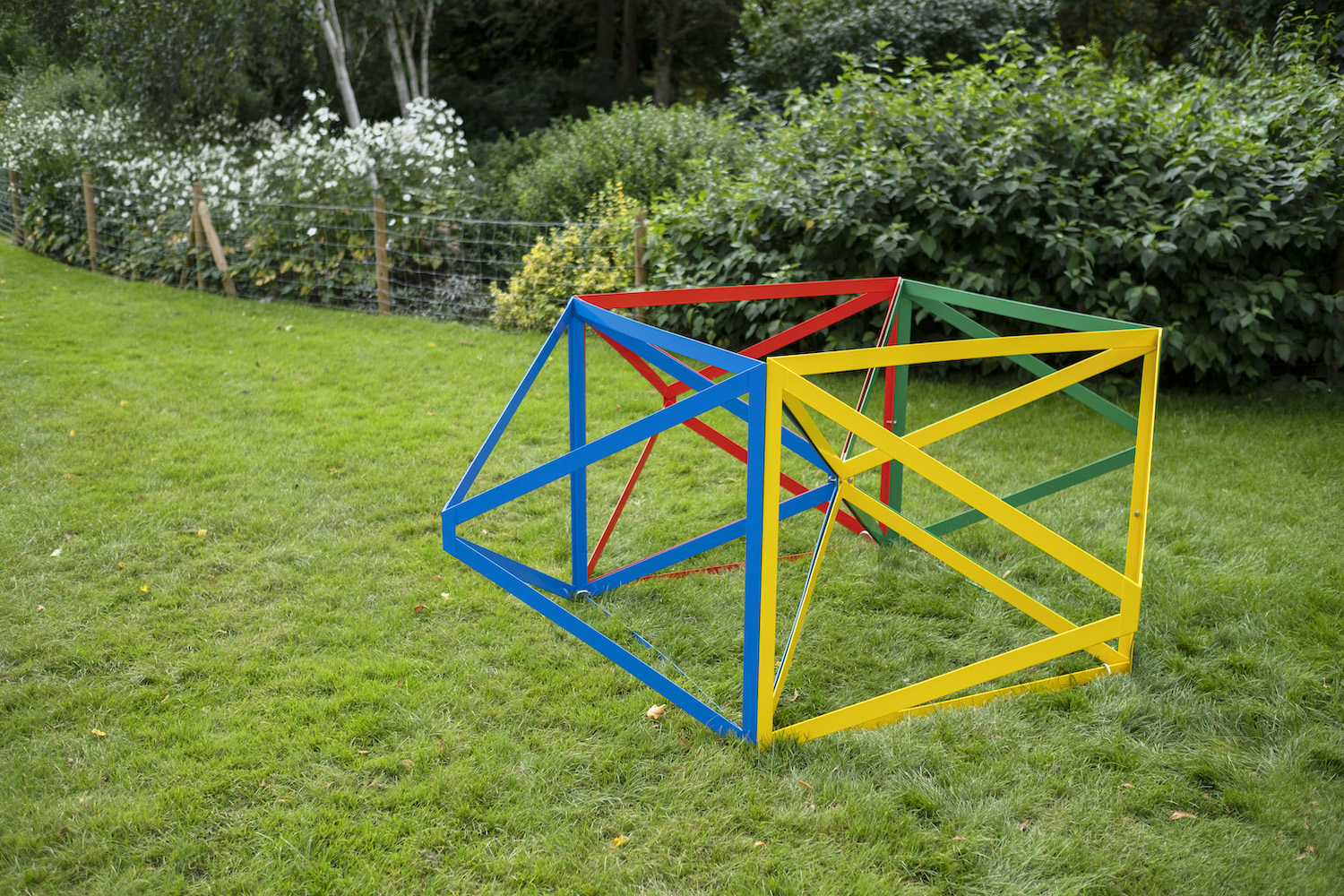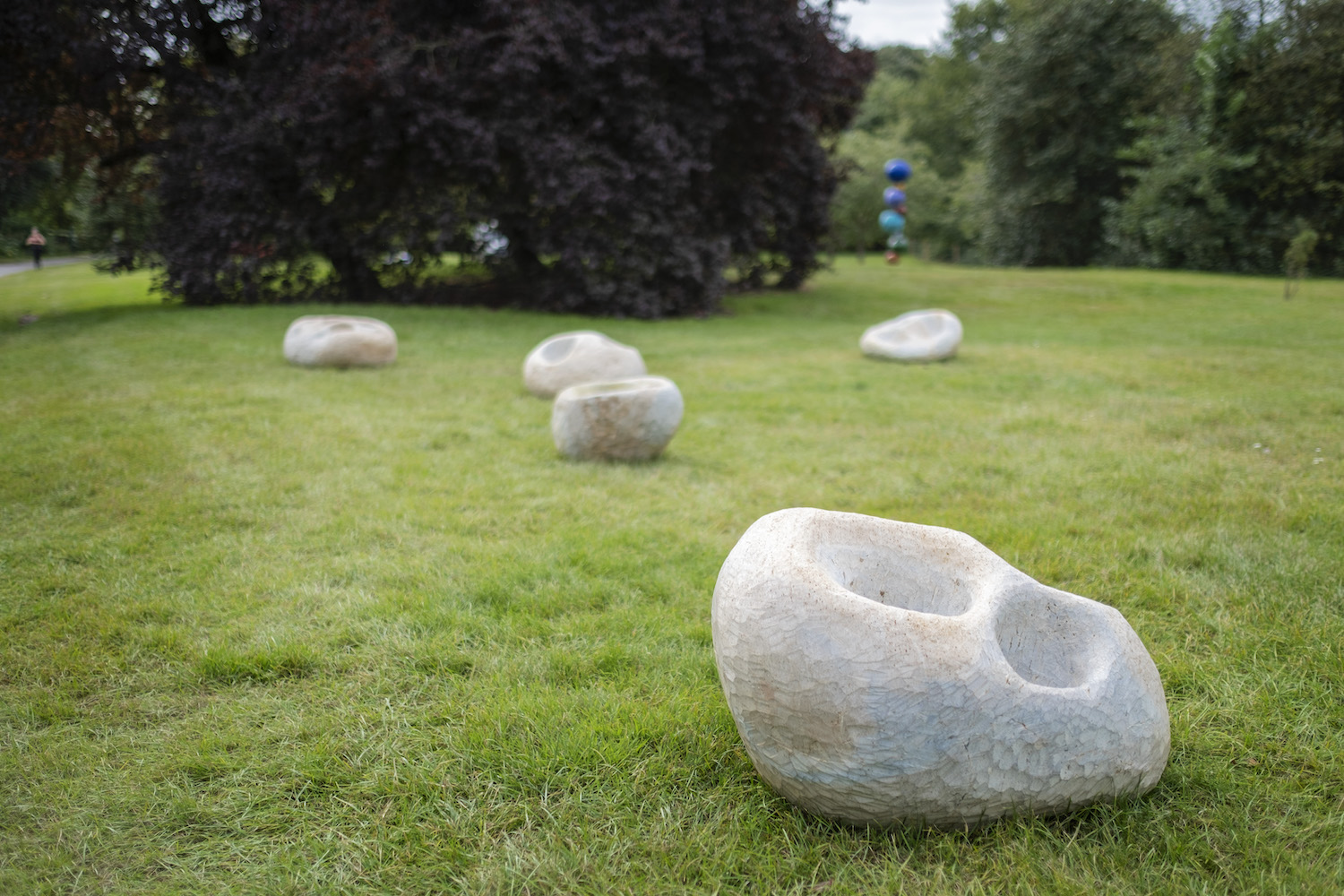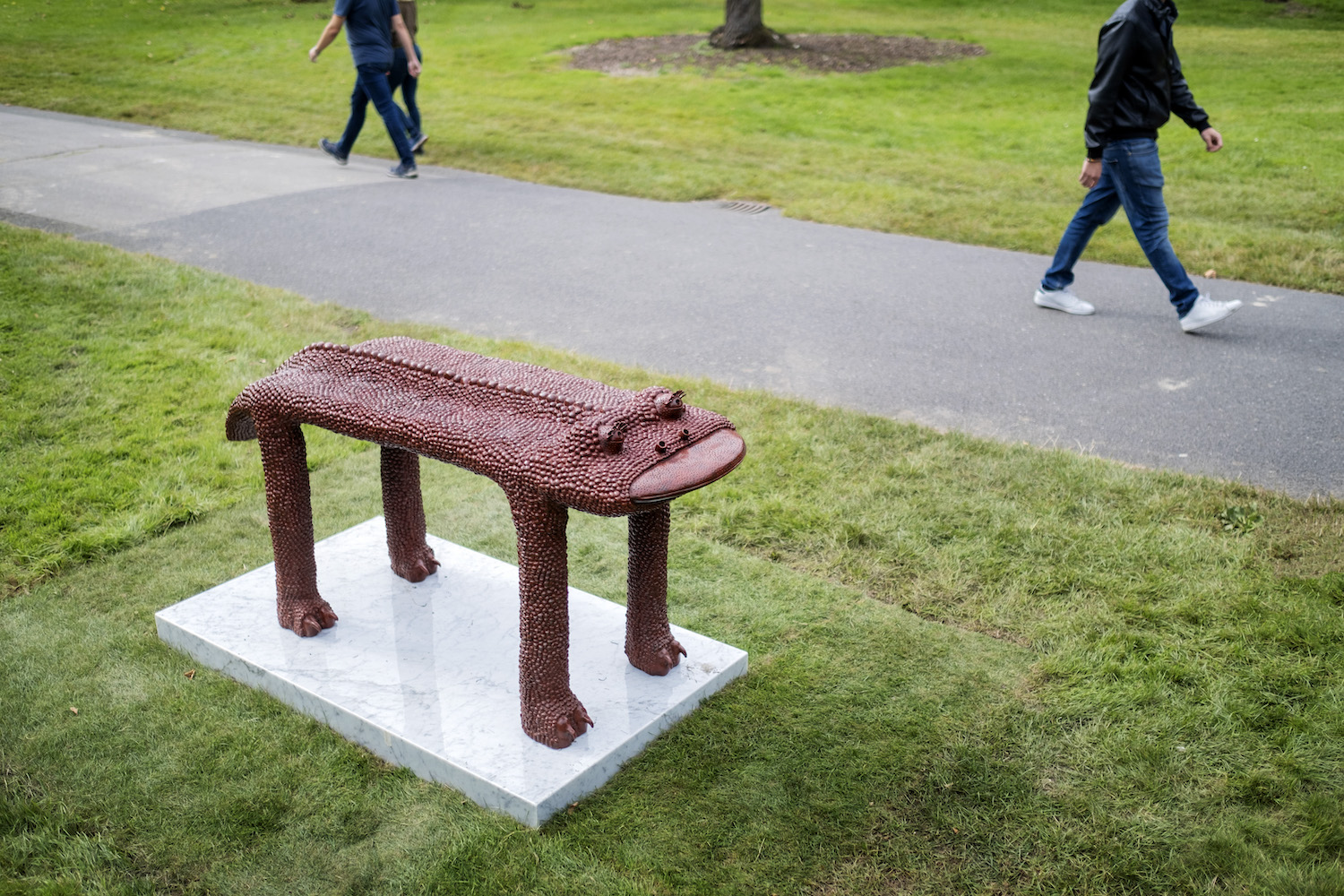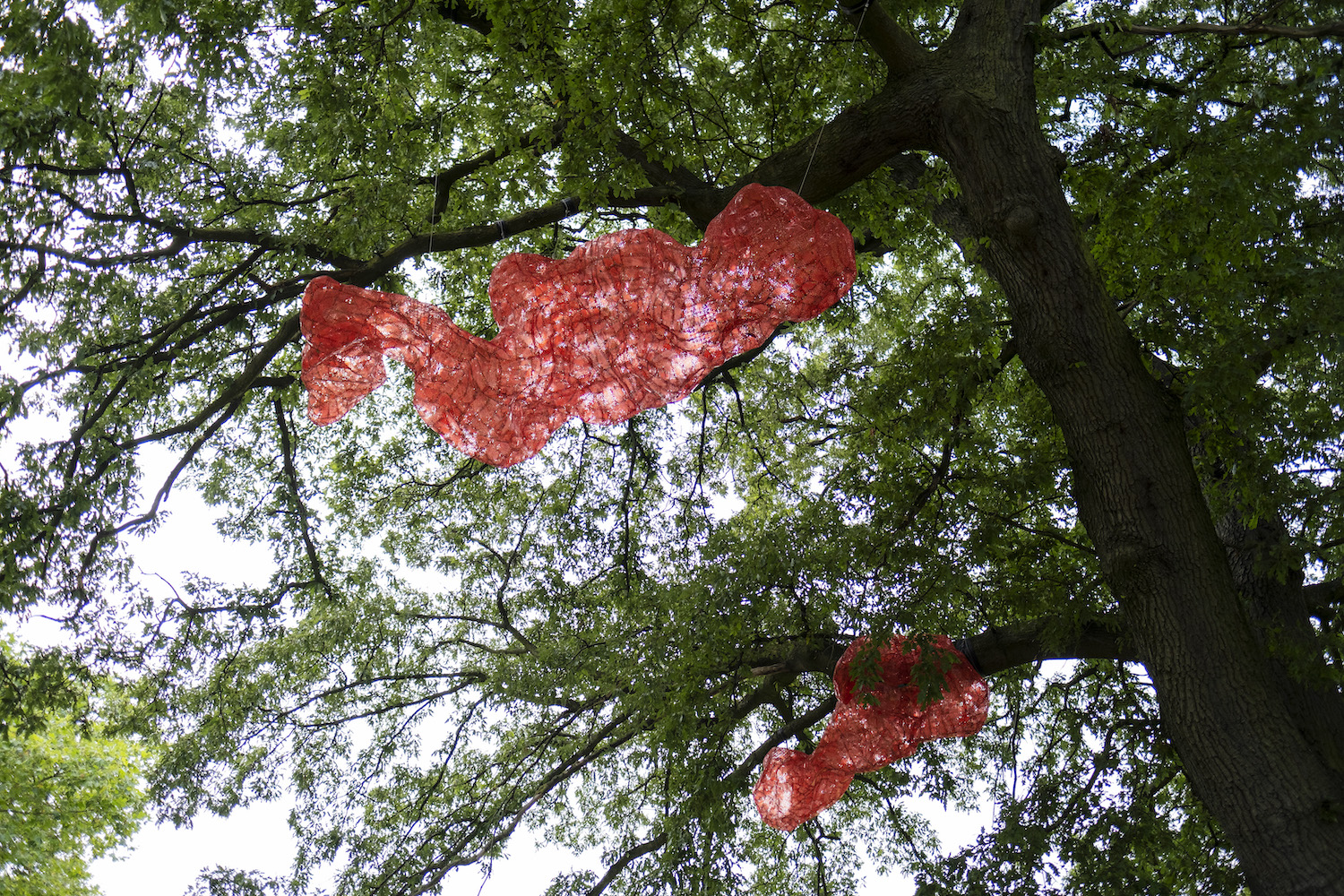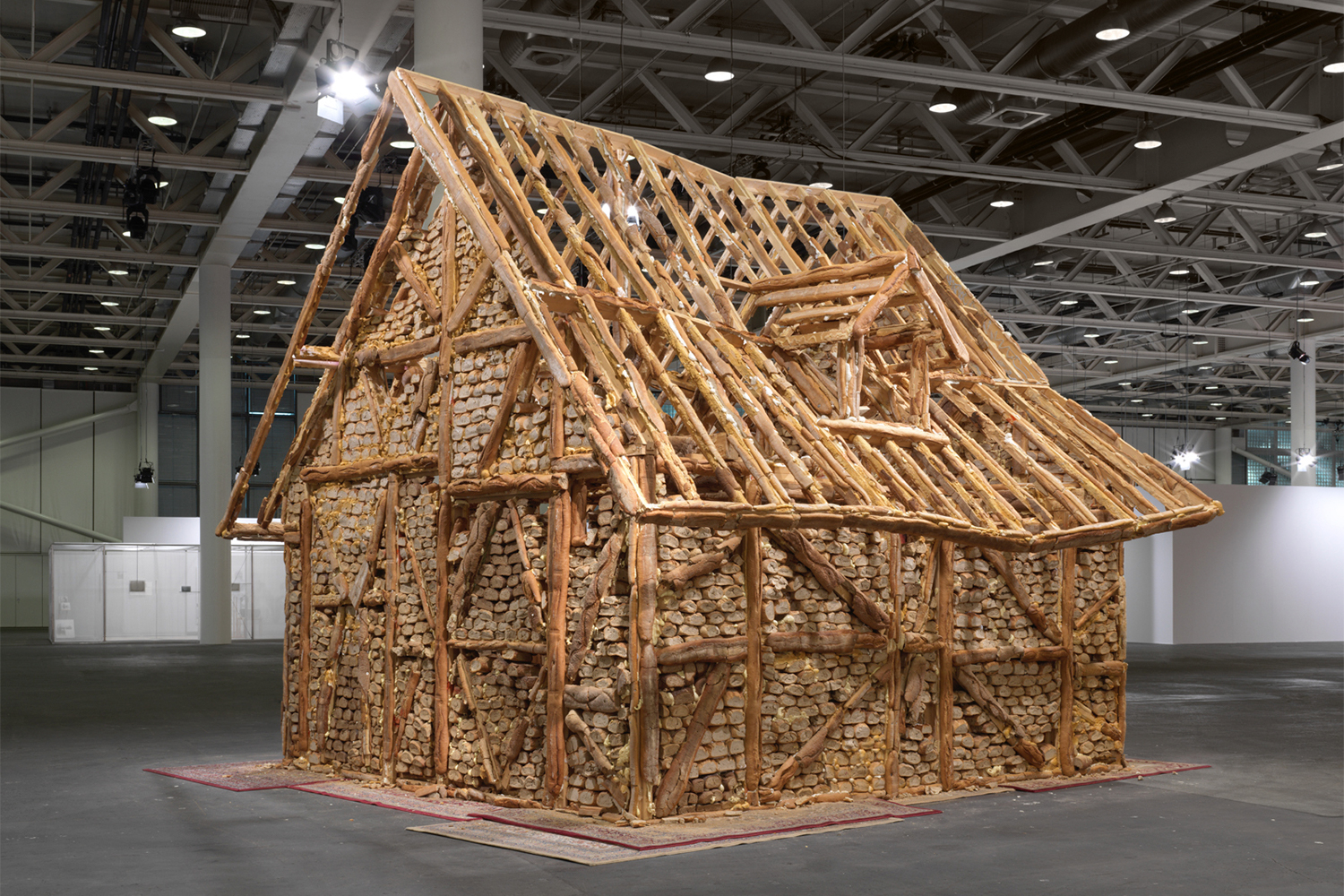Global Art Market News, Commentaries, and Critiques. A Column by Stefano Baia Curioni.
Sung Tieu, “Remote Viewing”. Installation view at NhaSan Collective, Hanoi, 2017. Photography bt Sung Tieu. Courtesy of the artist and Emalin, London. © Sung Tieu.
Alberta Whittle, Matrix Moves, 2019. Mixed media. Installation view of “How Flexible Can We Make the Mouth” at Dundee Contemporary Arts, Dundee, 2019. Presented by Copperfield.
Vanessa da Silva, The Citizens #2, 2020.
Newspaper (Folha de São Paulo, Financial Times, Metro, New York Times), acrylic paint, PVA, aluminium wire, polystyrene block.
90 x 18 x 18 cm.
Courtesy the artist and Instituto de Vision, Bogotá.
Alexandra Sukhareva, Helena Roerich’s silk brooch that survived the siege of Leningrad in the house of L. Mitusova, 2020. Silver gelatin print.
29 x 43.5 cm.
Courtesy of the artist and Osnova Gallery, Moscow.
ALGIRDAS ŠEŠKUS, 0027, 2020. Oil on canvas.
100 x 130 cm.
Courtesy of the artist and Galería PM8, Pontevedra, Spain.
Gabriel Rico, The second cause is meant to be an explanation of the
first (Páramo, The reunion I), 2020.
Cotton yarn on wooden board coated with beeswax.
100 x 150 x 5 cm.
Edition of 5 plus 1 artist’s proof (#1/5).
Courtesy of the artist and OMR, Mexico City.
Issy Wood, Carmela, answering, 2021. Oil on linen. 102 x 139.5 x 5 cm.
Courtesy of the artist and Carlos/ Ishikawa, London.
Garrett Bradley, AKA, 2019. HD single channel video, color and sound.
8′ 17”.
Courtesy of the artist and Lisson Gallery, London.
Deborah Roberts, A long way to go, 2021.
Mixed media collage on canvas. 165.1 x 127 cm.
Photography by Paul Bardargjy.
Courtesy of the artist and Stephen Friedman Gallery, London.
© Deborah Roberts.
Ernst Yohji Jäger, Untitled 6 (seated), 2020.
Oil on canvas. 90.5 × 100 cm, 93 × 101 cm.
Photography by Kunst-dokumentation.com.
Courtesy of Private collection and Croy Nielsen, Vienna.
As I board the Eurostar that will take me home from a buzzing week of auctions and FIAC in Paris, I try to unravel the million thoughts that populate my mind at the end of what feels like the longest and busiest fortnight for the art market since the pre-COVID era.
Let’s go in order.
On October 13, Frieze 2021 opened its first in-person edition since 2019, welcoming a crowd of (more or less diligently) masked — and nonetheless very excited — VIP collectors and art professionals. Regents Park, sprinkled with large sculptures as part of the fair’s program, felt lavish again, as visitors made their way between the two huge, bright white pavilions hosting Frieze London and Frieze Masters.
The atmosphere was particularly dazzling at Frieze London, where things felt more like “business as usual.” One gallerist at Frieze London, showing confidence in the market while seemingly inverting the growing tendency for advance sales, confided that “of the artists we are representing at the fair, we decided to only pre-sell the works on paper before the show, while keeping the oils available for Frieze week.”
Ashley Holmes, Distend, 2021.
Courtesy of the artist and Leeds Art. © Peter Martin.
Ndaye Kouagou, When to feel comfortable and when to feel uncomfortable, 2021. Still. One channel video. 2′ 18”. Courtesy of the artist and Nir Altman, Munich.
NATACHA DONZÉ, “Festins”. Installation view at Musée des beaux-arts de La Chaux-de-Fonds, 2020. Courtesy the artist and Parliament, Paris.
NATACHA DONZÉ, Atlas (l’ouverture),2021. Acrylic on canvas. 190 x 190 cm. Courtesy of the artist and Parliament, Paris.
Esteban Jefferson, “Art on the Grid”.
Installation view. Presented by Public Art Fund, New York, on JCDecaux bus shelters citywide, 2020.
Photography by Nicholas Knight.
Courtesy of the artist and Tanya Leighton, Berlin.
Esteban Jefferson, Chambre Parentale, 2021. Oil on linen.
213.4×167.6 cm.
Photography by Dario Lasagni.
Courtesy of the artist and Tanya Leighton, Berlin.
Lucy Bull, 3:34, 2021.
Oil on linen. 137.2 x 244.5 x 4.1 cm. Courtesy of the artist and David Kordansky Gallery, Los Angeles.
Ebun Sodipo, Illustrations for Libations, Attestations, Affirmations, 2020. Performance view at South London Gallery, London.
Rebecca Bellantoni, Untitled, 2021. Courtesy of the artist.
Meanwhile, the general consensus at Frieze Masters was that, this year, the pace was made even slower than usual by two factors: the strictly timed ticketing system introduced as a crowd control measure; and the thin attendance of collectors from America and Asia.
The character of the fair certainly reflected the current zeitgeist of diversity and inclusivity, highlighted by the success of a popular Frieze Week satellite event for collectors and their advisers: the 1-54 Contemporary African Art Fair, a leading international art fair dedicated to Africa’s fifty-four countries and its global diaspora. As its name suggests, 1-54 strives to promote vibrant and dynamic contemporary art from a diverse set of African perspectives.
At Frieze Masters, the celebrated Spotlight section, curated by Laura Hoptman (executive director of The Drawing Center, New York), featured solo presentations of rarely seen works by overlooked modern masters, thus championing a diverse group of artists. A few booths away, art-market power dealers Lévy-Gorvy dedicated their exhibition to the friendship of African-American artists Carrie Mae Weems (b. 1953) and Terry Adkins (1953–2014).
Nicola L., We Want to Breathe, c. 1976.
Ink on cotton, wood.
127.5 x 256 x 14 cm.
Courtesy the artist and Alison Jacques, London. © Nicola L. Collection and Archive.
Alexander Calder, Untitled, 1963.
Gouache and ink on paper. 67.9 x 101.6 cm.
Courtesy of Barbara Mathes Gallery, New York.
Fausto Melotti, , 1974.
Plaster, brass and mixed media. 50 x 70 cm.
Courtesy of Barbara Mathes Gallery, New York.
Alexander Calder, Two Moons, 1969.
Sheet metal, wire and paint.
76.2 x 121.9 x 45.7 cm.
Courtesy the artist and Ben Brown Fine Arts, London.
A.R. Penck, Das Rote Flugzeug [The red plane], 1985. Oil on canvas.
60 x 80 cm.
Courtesy of Bastian, London.
Ad Reinhardt, Untitled, n.d.
Courtesy David Zwirner, New York / London / Paris / Hong Kong.
© AD REINHARDT FOUNDATION / Artists Rights Society (ARS).
Gastone Novelli, Dalmazia, 1966.
Mixed media on canvas.
30 x 40 cm.
Courtesy ML Fine Art – Matteo Lampertico, Milan.
JANET SOBEL, untitled, c. 1946.
Gouache on paper.
31.8 x 34.3 cm.
Courtesy of the artist and The Gallery of Everything, London.
Two Seated Ladies, c. 1800. Reverse glass painting made for the Indian market
Western India (or Canton, China).
Courtesy Amir Mohtashemi, London.
Rachel Whiteread, SIT, 2007 – 2008.
Plaster, pigment and steel (seven units and one chair).
75 x 40 x 45 cm. Presented by Stuart Lochhead Sculpture. Photography by Mike Bruce.
Courtesy the artist and Gagosian. © Rachel Whiteread.
Meanwhile in Mayfair, major contemporary art sales were held by Christie’s, Sotheby’s, and Phillips, with encouraging results and some wow moments. Sotheby’s made a stir when it sold Banksy’s Love Is in the Bin for a record price of £18.6m, which had partially self-shredded when it last appeared in the same room three years ago. A day later, Christie’s sold the first non-fungible token to come to auction in Europe — only minted in September 2021— for just shy of one million pounds to a bidder in the room, where 90% of the lots found a buyer.
London Frieze week also offered Sotheby’s and Christie’s a perfect platform for the European unveiling of the magnificent properties that the two houses will soon be selling in New York.
One of the most important collections of contemporary art, owned by New York real estate magnate Harry Macklowe and his ex-wife Linda, and comprising sixty-five paintings and sculptures spanning from Pablo Picasso to Andy Warhol, will serve as the bulk of Sotheby’s November sales week, with an estimate in excess of $600 million. To the windfall of the Macklowe Collection at Sotheby’s, Christie’s has responded with the incredible Cox Collection of modern art — including major paintings by Van Gogh, Caillebotte, and Cézanne — that will be offered the week before in New York.
Annie Morris, Stack 9, Ultramarine Blue, 2021. Presented by Timothy Taylor. Frieze Sculpture 2021. Photography by Linda Nylind. Courtesy of Linda Nylind / Frieze.
Rose Wylie, Pineapple, 2020. Presented by David Zwirner. Frieze Sculpture 2021.
Photography by Linda Nylind. Courtesy of Linda Nylind / Frieze.
Counterspace, Fragment of Serpentine Pavilion 2021 for Frieze Sculpture 2021. Presented by Serpentine, London.
Photography by Linda Nylind. Courtesy of Linda Nylind / Frieze.
Ibrahim El-Salahi, Meditation Tree,
2018.Ppresented by Vigo Gallery. Frieze Sculpture 2021. Photography by Linda Nylind. Courtesy of Linda Nylind / Frieze.
Gisela Colón, Quantum Shift (Parabolic Monolith Sirius Titanium), 2021 Presented by GAVLAK. Frieze Sculpture 2021.
Photography by Linda Nylind. Courtesy of Linda Nylind / Frieze.
Frieze Sculpture 2021.
Photography by Linda Nylind. Courtesy of Linda Nylind / Frieze.
Rasheed Araeen, Lovers in The Regent’s Park,
2021. Presented by Grosvenor Gallery. Frieze Sculpture 2021.
Photography by Linda Nylind. Courtesy of Linda Nylind / Frieze.
Solange Pessoa, Untitled, from Skull series,
2016. Presented by Mendes Wood DM. Frieze Sculpture 2021.
Photography by Linda Nylind. Courtesy of Linda Nylind / Frieze.
Yunizar, Induk Monster (Mother Monster), 2017. Presented by Gajah Gallery. Frieze Sculpture 2021.
Photography by Linda Nylind. Courtesy of Linda Nylind / Frieze.
Tatiana Wolska, Untitled (module 1 and 2), 2019. Presented by L’Etrangère / Irène Laub Gallery. Frieze Sculpture 2021.
Photography by Linda Nylind. Courtesy of Linda Nylind / Frieze.
Fast-forward to October 21, when FIAC held its opening in the new setting of the Grand Palais Éphémère, a temporary exhibition hall in the Champ de Mars, designed by architect Jean-Michel Wilmotte as a replacement for the Grand Palais, currently being renovated for the 2024 Olympics.
When questioned about the suitability of having two fairs back-to-back, many of the exhibitors (some of which had arrived directly from Frieze) shared their concerns and said that, going forward, they were not planning to participate in as many fairs as they did in 2019; others, however, were more optimistic and reported “good energy” and, more importantly, major sales.
Witnessing the art world become more digitally savvy while setting new goals for sustainability and carbon footprint reduction is something to rejoice. At the same time, I can’t help thinking that breathing the rarefied air of those crowded tents has never felt so energizing.

